 Search by Keyword
|
"HELTER SKELTER"
(John Lennon – Paul McCartney)
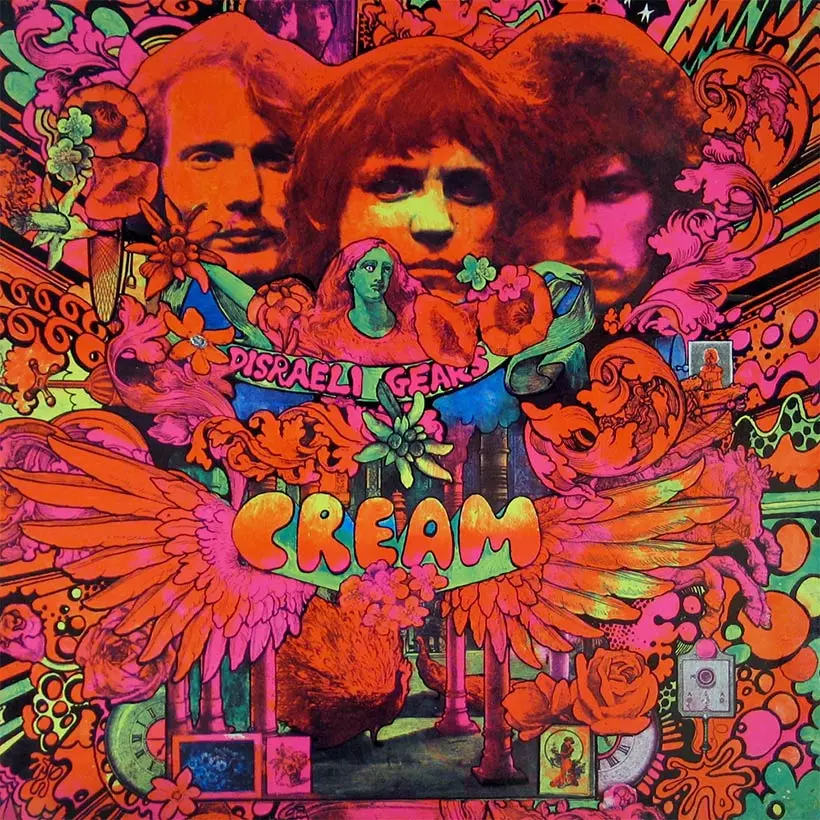 The Beatles aren't primarily known as "hard rock" artists of the '60s, but as more of a trend setting group for popular music as a whole. They are not ranked among the likes of Cream, Jimi Hendrix, The Who or Led Zeppelin, all of which are viewed as heavy hitters of the genesis of what has become known as "classic rock" today. The Beatles aren't primarily known as "hard rock" artists of the '60s, but as more of a trend setting group for popular music as a whole. They are not ranked among the likes of Cream, Jimi Hendrix, The Who or Led Zeppelin, all of which are viewed as heavy hitters of the genesis of what has become known as "classic rock" today.
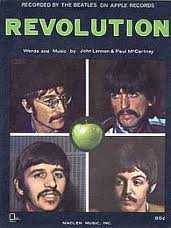 Nonetheless, The Beatles aren't forgotten within this genre. Daily playlists on Classic Rock radio stations around the world include later Beatles classics such as “Revolution,” “Come Together” “Back In The USSR” and “While My Guitar Gently Weeps.” Without a doubt, however, “Helter Skelter” can easily be referred to as the hardest and heaviest Beatles song within their entire catalog. It may not be as melodically satisfying as the other songs mentioned above, but the sheer energy displayed on “Helter Skelter” shows The Beatles to be as capable as anyone in offering the most ear-splitting and raucous piece of recorded music on display at that time. "The song has sometimes been credited as the start of heavy metal," Paul relates in his 2021 book "The Lyrics." "I don't know whether that's the case, but it's certainly true that the music preceding rock, the gentle and romantic dance music, was kicked over. We were kicking that out of the way with this song." Nonetheless, The Beatles aren't forgotten within this genre. Daily playlists on Classic Rock radio stations around the world include later Beatles classics such as “Revolution,” “Come Together” “Back In The USSR” and “While My Guitar Gently Weeps.” Without a doubt, however, “Helter Skelter” can easily be referred to as the hardest and heaviest Beatles song within their entire catalog. It may not be as melodically satisfying as the other songs mentioned above, but the sheer energy displayed on “Helter Skelter” shows The Beatles to be as capable as anyone in offering the most ear-splitting and raucous piece of recorded music on display at that time. "The song has sometimes been credited as the start of heavy metal," Paul relates in his 2021 book "The Lyrics." "I don't know whether that's the case, but it's certainly true that the music preceding rock, the gentle and romantic dance music, was kicked over. We were kicking that out of the way with this song."
The ground they broke with “Yesterday” on one end of the spectrum was only topped by “Helter Skelter” on the other end of the spectrum. And both written by the same author. Now that's versatility!
Songwriting History
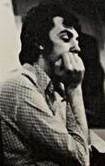 "I'd read a review of a record where it said, 'And this group' - it was about some group I don't remember - 'this group really goes wild, there's echo on everything, they're screaming their heads off.' And I just remember thinking, 'Oh, it'd be great to do one like that. Pity they've done it. Must be great - a really screaming record.' And then I heard their record and it was quite straight, and it was sort of very sophisticated. It wasn't rough and screaming and tape echo at all. So I thought, 'Oh, well, we'll do one like that, then.' And I had this song called 'Helter Skelter' which is just a ridiculous song. So we did it like that, because I like noise." "I'd read a review of a record where it said, 'And this group' - it was about some group I don't remember - 'this group really goes wild, there's echo on everything, they're screaming their heads off.' And I just remember thinking, 'Oh, it'd be great to do one like that. Pity they've done it. Must be great - a really screaming record.' And then I heard their record and it was quite straight, and it was sort of very sophisticated. It wasn't rough and screaming and tape echo at all. So I thought, 'Oh, well, we'll do one like that, then.' And I had this song called 'Helter Skelter' which is just a ridiculous song. So we did it like that, because I like noise."
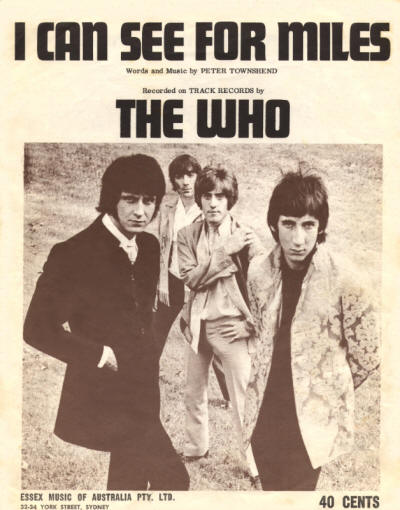 The above quote from Paul came from a November 1968 interview with Tony Macarthur, Programme Director of Radio Luxembourg. The review that Paul was referring to was reportedly about the October 1967 released single by The Who entitled “I Can See For Miles,” which indeed pushed the envelope at the time when it came to raw energy on a pop record. Throughout the years, Paul would remember the article as saying different things, such as in 1985: “That came about because I read in Melody Maker that The Who had made some track or other that was the loudest, most raucous rock'n'roll, the dirtiest thing they've ever done...It make me think, 'Right. Got to do it.' I like that kind of geeking up. And we decided to do the loudest, nastiest, sweatiest rock number we could.” The above quote from Paul came from a November 1968 interview with Tony Macarthur, Programme Director of Radio Luxembourg. The review that Paul was referring to was reportedly about the October 1967 released single by The Who entitled “I Can See For Miles,” which indeed pushed the envelope at the time when it came to raw energy on a pop record. Throughout the years, Paul would remember the article as saying different things, such as in 1985: “That came about because I read in Melody Maker that The Who had made some track or other that was the loudest, most raucous rock'n'roll, the dirtiest thing they've ever done...It make me think, 'Right. Got to do it.' I like that kind of geeking up. And we decided to do the loudest, nastiest, sweatiest rock number we could.”
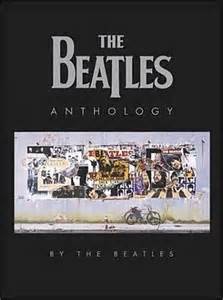 In the book “Beatles Anthology,” Paul related: “I was in Scotland and I read in Melody Maker that Pete Townshend had said: 'We've just made the raunchiest, loudest, most ridiculous rock'n'roll record you've ever heard.' I never actually found out what track it was that The Who had made, but that got me going, just hearing him talk about it. So I said to the guys, 'I think we should do a song like that; something really wild.' And I wrote 'Helter Skelter.'” In the book “Beatles Anthology,” Paul related: “I was in Scotland and I read in Melody Maker that Pete Townshend had said: 'We've just made the raunchiest, loudest, most ridiculous rock'n'roll record you've ever heard.' I never actually found out what track it was that The Who had made, but that got me going, just hearing him talk about it. So I said to the guys, 'I think we should do a song like that; something really wild.' And I wrote 'Helter Skelter.'”
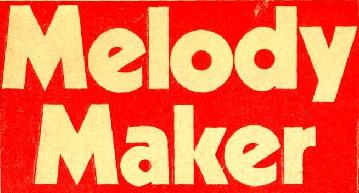 A Melody Maker review written by Chris Welch did appear in the magazine around this time reviewing the song, stating, “Forget 'Happy Jack' sitting in sand on the Isle of Man. This marathon epic of swearing cymbals and cursing guitars marks the return of The Who as a major freak-out force. Recorded in America, it's a Pete Townshend mystery and menace, and delivered by the emphatic Mr. Roger Daltry.” If this was indeed the review that Paul read in Melody Maker, he continued to alter the contents of the article in interviews as the years progressed, as most of us are prone to do when repeatedly recounting an event in our lives. A Melody Maker review written by Chris Welch did appear in the magazine around this time reviewing the song, stating, “Forget 'Happy Jack' sitting in sand on the Isle of Man. This marathon epic of swearing cymbals and cursing guitars marks the return of The Who as a major freak-out force. Recorded in America, it's a Pete Townshend mystery and menace, and delivered by the emphatic Mr. Roger Daltry.” If this was indeed the review that Paul read in Melody Maker, he continued to alter the contents of the article in interviews as the years progressed, as most of us are prone to do when repeatedly recounting an event in our lives.
 Sometime around 1994, Paul elaborated further on the writing of this song in his book “Many Years From Now” as follows: “I was always trying to write something different, trying to not write in character, and I read this and I was inspired. 'Oh, wow! Yeah!' Just that one little paragraph was enough to inspire me; to make me make a move. So I sat down and wrote 'Helter Skelter' to be the most raucous vocal, the loudest drums, etcetera etcetera. I was using the symbol of a helter skelter as a ride from the top to the bottom – the rise and fall of the Roman Empire – and this was the fall, the demise, the going down. You could have thought of it as a rather cute title but it's since taken on all sorts of ominous overtones because Manson picked it up as an anthem, and since then quite a few punk bands have done it because it is a raunchy rocker.” Sometime around 1994, Paul elaborated further on the writing of this song in his book “Many Years From Now” as follows: “I was always trying to write something different, trying to not write in character, and I read this and I was inspired. 'Oh, wow! Yeah!' Just that one little paragraph was enough to inspire me; to make me make a move. So I sat down and wrote 'Helter Skelter' to be the most raucous vocal, the loudest drums, etcetera etcetera. I was using the symbol of a helter skelter as a ride from the top to the bottom – the rise and fall of the Roman Empire – and this was the fall, the demise, the going down. You could have thought of it as a rather cute title but it's since taken on all sorts of ominous overtones because Manson picked it up as an anthem, and since then quite a few punk bands have done it because it is a raunchy rocker.”
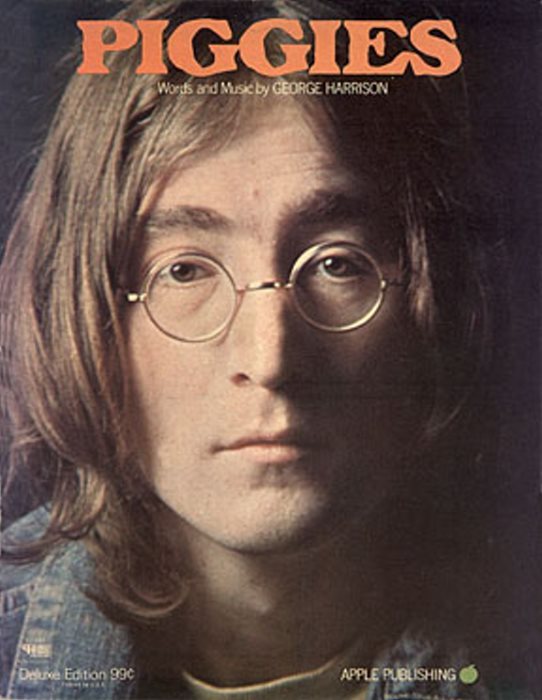 Regarding the Charles Manson connection to this song, John Lennon, in his 1980 interview in Playboy Magazine, states that "Helter Skelter" is "Paul completely. All that Manson stuff was built around George's 'Piggies' and this song of Paul's about an English fairground. It has nothing to do with anything, and least of all to do with me." Paul once remarked: "Obviously you cannot tell who is going to listen to your stuff and who's going to interpret it. If someone listens to 'Helter Skelter' and says, 'Aha, this is a signal,' you have no control over that." For those who want more details about Charles Manson's interpretation of the song and his activities, I invite you to please look elsewhere. Regarding the Charles Manson connection to this song, John Lennon, in his 1980 interview in Playboy Magazine, states that "Helter Skelter" is "Paul completely. All that Manson stuff was built around George's 'Piggies' and this song of Paul's about an English fairground. It has nothing to do with anything, and least of all to do with me." Paul once remarked: "Obviously you cannot tell who is going to listen to your stuff and who's going to interpret it. If someone listens to 'Helter Skelter' and says, 'Aha, this is a signal,' you have no control over that." For those who want more details about Charles Manson's interpretation of the song and his activities, I invite you to please look elsewhere.
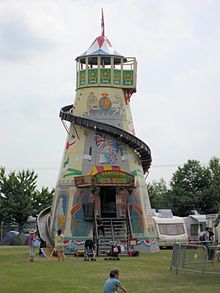 A “Helter Skelter” is an amusement ride popularized mostly in the UK with a slide built in a spiral around a high tower. In his book "The Lyrics," Paul describes a helter skelter as a "fairground fixture - conical, with a slide around the outside. We went on them load of times as kids. You'd walk up the stairs inside, and you'd take a mat - just like a doormat - and you'd sit on it and slide down, and then you'd walk up again. I used that as a symbol of like. One minute you're up, next minute you get knocked down. You're feeling euphoric, then you're feeling miserable. Such is the nature of life." A “Helter Skelter” is an amusement ride popularized mostly in the UK with a slide built in a spiral around a high tower. In his book "The Lyrics," Paul describes a helter skelter as a "fairground fixture - conical, with a slide around the outside. We went on them load of times as kids. You'd walk up the stairs inside, and you'd take a mat - just like a doormat - and you'd sit on it and slide down, and then you'd walk up again. I used that as a symbol of like. One minute you're up, next minute you get knocked down. You're feeling euphoric, then you're feeling miserable. Such is the nature of life."
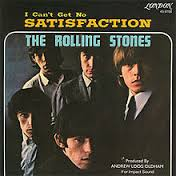 Using this as a metaphor, Paul describes the complexities and sexual tension experienced within a romantic relationship, hence the lines “do you, don't you want me to love you,” “you may be a lover but you ain't no dancer,” “she's coming down fast" and "will you, won't you want me to make you," this final phrase specifically referring to having sex (such as in the lyric "trying to make some girl" in The Rolling Stones' song "(I Can't Get No) Satisfaction." "Lines like 'she's coming down fast' have a sexual component, perhaps a little drug component too. A little darker," Paul explains in his book "The Lyrics." Using this as a metaphor, Paul describes the complexities and sexual tension experienced within a romantic relationship, hence the lines “do you, don't you want me to love you,” “you may be a lover but you ain't no dancer,” “she's coming down fast" and "will you, won't you want me to make you," this final phrase specifically referring to having sex (such as in the lyric "trying to make some girl" in The Rolling Stones' song "(I Can't Get No) Satisfaction." "Lines like 'she's coming down fast' have a sexual component, perhaps a little drug component too. A little darker," Paul explains in his book "The Lyrics."
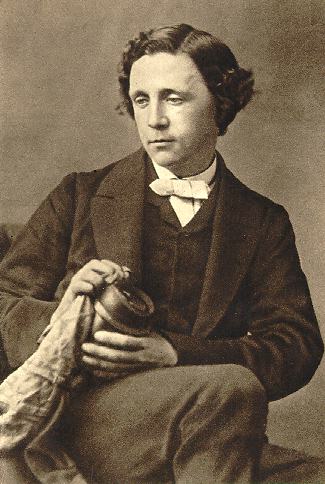 There is also a more innocent and adolescent source for lyrical inspiration found in "Helter Skelter." "The verses are based on the Mock Turtle's song from 'Alice In Wonderland,'" Paul reveals in his book "The Lyrics." "John and I both adored Lewis Carroll, and we often quoted him," McCartney reveals, the example here being given: There is also a more innocent and adolescent source for lyrical inspiration found in "Helter Skelter." "The verses are based on the Mock Turtle's song from 'Alice In Wonderland,'" Paul reveals in his book "The Lyrics." "John and I both adored Lewis Carroll, and we often quoted him," McCartney reveals, the example here being given:
"'Will you walk a little faster?' said a whiting to a snail,
'There's a porpoise close behind us, and he's treading on my tail.
See how eagerly the lobsters and the turtles all advance!
They are waiting on the shingle - will you come and join the dance?
Will you, won't you, will you, won't you, will you join the dance?
Will you, won't you, will you, won't you, won't you join the dance?'"
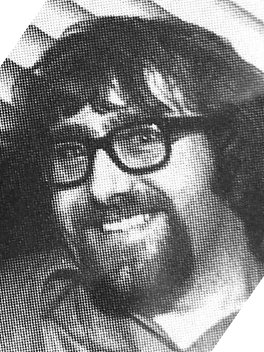 The two-page original lyric sheet, which was transcribed in 1968 by assistant Mal Evans with notes by Paul, appears to emphasize the "raucous vocal" he wanted to sing on the song by spelling out in all caps "DON'T YOU WANT ME TO LOVE YOO" and "MILES ABOVE YOO." Other lyrics transcribed on the original lyric sheet that were later changed were "I go back to the top of the hill (ride) / and I stop and I turn and I give you a thrill" and "Do you don't you want me to make it / I'm loving you baby and I can't fake it." The two-page original lyric sheet, which was transcribed in 1968 by assistant Mal Evans with notes by Paul, appears to emphasize the "raucous vocal" he wanted to sing on the song by spelling out in all caps "DON'T YOU WANT ME TO LOVE YOO" and "MILES ABOVE YOO." Other lyrics transcribed on the original lyric sheet that were later changed were "I go back to the top of the hill (ride) / and I stop and I turn and I give you a thrill" and "Do you don't you want me to make it / I'm loving you baby and I can't fake it."
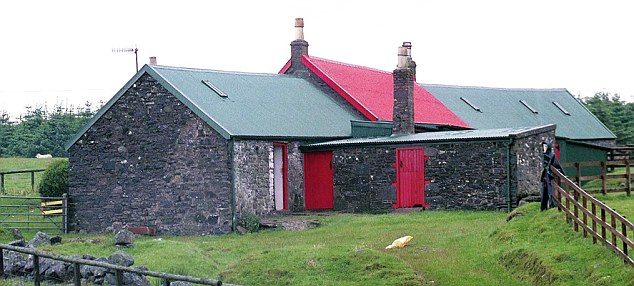 As stated above, John expunges himself from any involvement in the writing of the song. As for the time of writing, Paul states that he was in Scotland when he read the Melody Maker review that inspired his writing of the song. No doubt this occurred sometime in the spring of 1968 at his High Park Farm on the Mull Of Kintyre, possibly as late as June of 1968 since Paul did not premier a demo recording of the song at George's 'Kinfauns' home in May of 1968 along with the rest of the songs he had recently written. “Helter Skelter” most likely had not yet existed at that time. As stated above, John expunges himself from any involvement in the writing of the song. As for the time of writing, Paul states that he was in Scotland when he read the Melody Maker review that inspired his writing of the song. No doubt this occurred sometime in the spring of 1968 at his High Park Farm on the Mull Of Kintyre, possibly as late as June of 1968 since Paul did not premier a demo recording of the song at George's 'Kinfauns' home in May of 1968 along with the rest of the songs he had recently written. “Helter Skelter” most likely had not yet existed at that time.
Recording History
 The first recorded evidence of "Helter Skelter" appeared on June 11th, 1968, in EMI Studio Two sometime between 6:30 and 7 pm. The intention of the evening was to record Paul's ballad "Blackbird," which did get fully recorded at this session by 12:15 am. Engineer Geoff Emerick remembers the details of this day in his book 'Here, There And Everywhere": "Neither Ringo nor George was present on that particular evening, and John wanted to begin compiling sound effects for what would ultimately become 'Revolution 9,' so as soon as he learned that another studio was available, he decided to head off whith (producer) Chris Thomas and Phil (McDonald) - accompanied, as usual, by Yoko." The first recorded evidence of "Helter Skelter" appeared on June 11th, 1968, in EMI Studio Two sometime between 6:30 and 7 pm. The intention of the evening was to record Paul's ballad "Blackbird," which did get fully recorded at this session by 12:15 am. Engineer Geoff Emerick remembers the details of this day in his book 'Here, There And Everywhere": "Neither Ringo nor George was present on that particular evening, and John wanted to begin compiling sound effects for what would ultimately become 'Revolution 9,' so as soon as he learned that another studio was available, he decided to head off whith (producer) Chris Thomas and Phil (McDonald) - accompanied, as usual, by Yoko."
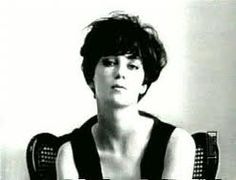 That other studio, EMI Studio Three, became available at 7 pm, which saw the exit of John and Yoko. However, as Geoff Emerick continues, “At one point a cameraman appeared to do a little filming for an Apple promo, and that interrupted the flow a little bit, but Paul just carried on, with his new lady friend sitting cross-legged at his feet.” This film still exists today which shows Paul running through sections of “Blackbird” as well as his newly written song “Helter Skelter” on acoustic guitar with his current girlfriend Francie Schwartz at his side. Since the film footage shows John and Yoko in attendance, this off-the-cuff acoustic rendition of “Helter Skelter” must have been performed before they left for EMI Studio Three at 7 pm. That other studio, EMI Studio Three, became available at 7 pm, which saw the exit of John and Yoko. However, as Geoff Emerick continues, “At one point a cameraman appeared to do a little filming for an Apple promo, and that interrupted the flow a little bit, but Paul just carried on, with his new lady friend sitting cross-legged at his feet.” This film still exists today which shows Paul running through sections of “Blackbird” as well as his newly written song “Helter Skelter” on acoustic guitar with his current girlfriend Francie Schwartz at his side. Since the film footage shows John and Yoko in attendance, this off-the-cuff acoustic rendition of “Helter Skelter” must have been performed before they left for EMI Studio Three at 7 pm.
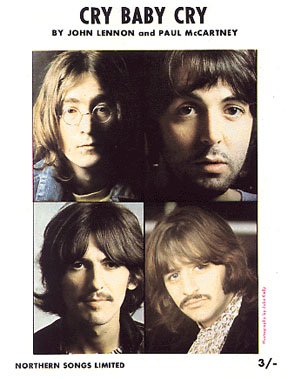 It wasn't until over a month later, on July 18th, 1968, the day after they attended the London premier of the move "Yellow Submarine" and its celebratory party, that The Beatles officially brought "Helter Skelter" into the studio for recording purposes, although the recordings of the song done at this session were essentially rehearsals. After extensive work on John's song “Cry Baby Cry” earlier in the day, the group returned to EMI Studio Two at 10:30 pm to work out “Helter Skelter,” this session not ending until 3:30 am the following morning. On the April 17th, 1978 Phil Donahue show, Ringo described the song as recorded at this EMI session as "mainly a jam, which started as a jam. We had nothing so we just started playing. Everybody who is a musician knows what a jam is. When you have nothing you just start playing, y'know, whatever you play. And you just do it together and then Paul started shouting 'Helter Skelter'...we were just having a good time and getting crazy." It wasn't until over a month later, on July 18th, 1968, the day after they attended the London premier of the move "Yellow Submarine" and its celebratory party, that The Beatles officially brought "Helter Skelter" into the studio for recording purposes, although the recordings of the song done at this session were essentially rehearsals. After extensive work on John's song “Cry Baby Cry” earlier in the day, the group returned to EMI Studio Two at 10:30 pm to work out “Helter Skelter,” this session not ending until 3:30 am the following morning. On the April 17th, 1978 Phil Donahue show, Ringo described the song as recorded at this EMI session as "mainly a jam, which started as a jam. We had nothing so we just started playing. Everybody who is a musician knows what a jam is. When you have nothing you just start playing, y'know, whatever you play. And you just do it together and then Paul started shouting 'Helter Skelter'...we were just having a good time and getting crazy."
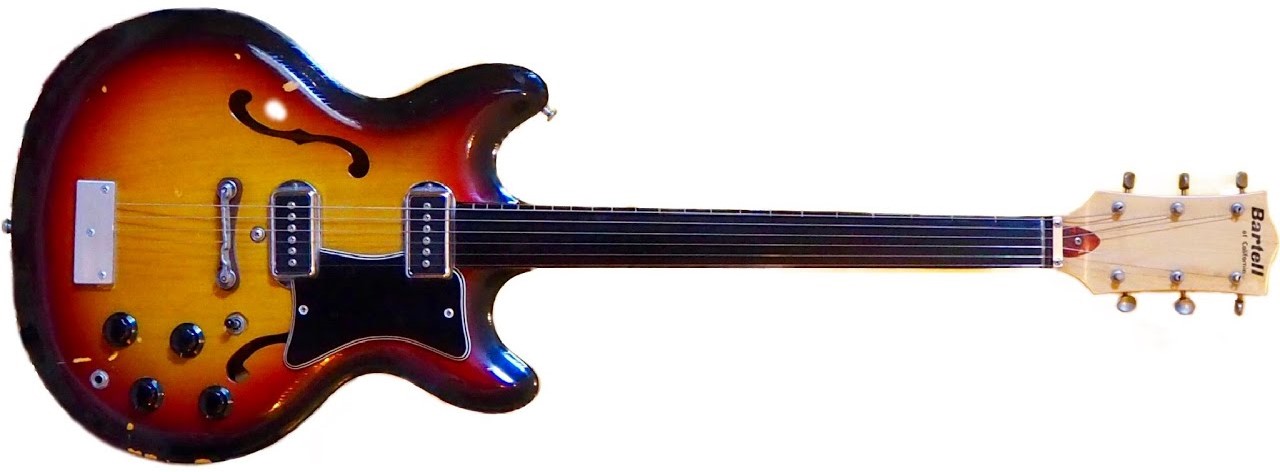 The Beatles ran through three drawn out takes of the song in the ominous-sounding key of E minor, rather than E major as heard in the released version. The instrumentation on these early takes was Paul on vocals and electric guitar, George experimenting with a Bartell fretless guitar prototype he acquired in California during his visit there in August of the previous year, John on a Fender VI six-string bass and Ringo on drums. "Take one” lasted 10:40, "take two" made it to 12:39, and "take three" stretched to an unprecedented 27:11, the longest ever Beatles recording. "You can only last as long as a reel of tape," producer Chris Thomas explained in an interview in 2019 for a broadcast episode of "Talk More Talk." "It was, like, 'tell us when the tape runs out' and they were just jamming basically." Unusually, all of the instruments were recorded onto track one of the four-track tape, which may appear to indicate that the purpose of this session was for rehearsals only. Paul's vocals, however, were isolated onto track four of the tape with added tape echo. The Beatles ran through three drawn out takes of the song in the ominous-sounding key of E minor, rather than E major as heard in the released version. The instrumentation on these early takes was Paul on vocals and electric guitar, George experimenting with a Bartell fretless guitar prototype he acquired in California during his visit there in August of the previous year, John on a Fender VI six-string bass and Ringo on drums. "Take one” lasted 10:40, "take two" made it to 12:39, and "take three" stretched to an unprecedented 27:11, the longest ever Beatles recording. "You can only last as long as a reel of tape," producer Chris Thomas explained in an interview in 2019 for a broadcast episode of "Talk More Talk." "It was, like, 'tell us when the tape runs out' and they were just jamming basically." Unusually, all of the instruments were recorded onto track one of the four-track tape, which may appear to indicate that the purpose of this session was for rehearsals only. Paul's vocals, however, were isolated onto track four of the tape with added tape echo.
 Kevin Howlett's description of this effect, as found in the "Track By Track" section of the book accompanying the Super Deluxe 50th Anniversary edition of the "White Album," describes it as "an effect created by having a second machine recording with its fader open. When the tape reaches the playback head after the audio has been recorded onto it by the record-head, the reproduction of the audio is delayed. How much delay depends on how far apart the heads are and the speed of the tape. In this session, the four-track machine was running at 15 inches-per-second, while the machine for tape-reverb ran at 30 ips. This created a fairly short delay on Paul's voice. The tape delay used at Sun Records in the 1950's, heard on early Elvis Presely records, was usually longer because it came from a tape running at 7.5 ips." Technical engineer Brian Gibson, in the book "The Beatles Recording Sessions," describes the effect this way: "They recorded the long versions of 'Helter Skelter' with live tape echo. Echo would normally be added at remix stage otherwise it can't be altered, but this time they wanted it live." Upon listening, it appears that all the instruments were recorded with this effect, not just the vocals. Kevin Howlett's description of this effect, as found in the "Track By Track" section of the book accompanying the Super Deluxe 50th Anniversary edition of the "White Album," describes it as "an effect created by having a second machine recording with its fader open. When the tape reaches the playback head after the audio has been recorded onto it by the record-head, the reproduction of the audio is delayed. How much delay depends on how far apart the heads are and the speed of the tape. In this session, the four-track machine was running at 15 inches-per-second, while the machine for tape-reverb ran at 30 ips. This created a fairly short delay on Paul's voice. The tape delay used at Sun Records in the 1950's, heard on early Elvis Presely records, was usually longer because it came from a tape running at 7.5 ips." Technical engineer Brian Gibson, in the book "The Beatles Recording Sessions," describes the effect this way: "They recorded the long versions of 'Helter Skelter' with live tape echo. Echo would normally be added at remix stage otherwise it can't be altered, but this time they wanted it live." Upon listening, it appears that all the instruments were recorded with this effect, not just the vocals.
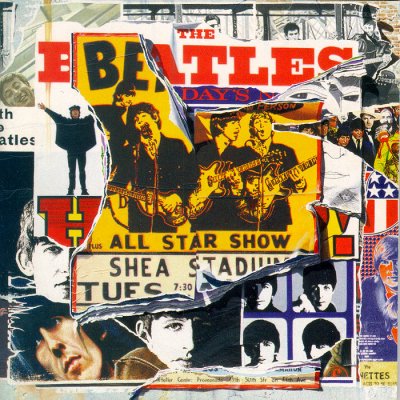 The first five minutes of "take two" have been included on the compilation album “Anthology 2” for us to get an idea of what the song sounded like at this point, revealing it to be a plodding slower version but with a good degree of energy nonetheless. Paul sings “Hell for leather” on occasion instead of “Helter Skelter,” this idea being dropped for the released version. The full 12:49 of "take two" is included in its entirety in the Super Deluxe 50th Anniversary Edition of the "White Album," and includes various ad lib lines, such as, "When I get to the bottom, I go back to the top of the ride / And I know, as I get, and I never get high / but I'll zip to the bottom and I'll see you again, yeah, yeah, yeah," and "When I get to the bottom I go back to the top of the hill / where I stop and I turn and I give you a pill / and I may, that I meet at the bottom agin, yeah, yeah, yeah." The "top of the hill" and "top of the ride" lyrics were also included on the original handwritten lyric sheet (see above). The first five minutes of "take two" have been included on the compilation album “Anthology 2” for us to get an idea of what the song sounded like at this point, revealing it to be a plodding slower version but with a good degree of energy nonetheless. Paul sings “Hell for leather” on occasion instead of “Helter Skelter,” this idea being dropped for the released version. The full 12:49 of "take two" is included in its entirety in the Super Deluxe 50th Anniversary Edition of the "White Album," and includes various ad lib lines, such as, "When I get to the bottom, I go back to the top of the ride / And I know, as I get, and I never get high / but I'll zip to the bottom and I'll see you again, yeah, yeah, yeah," and "When I get to the bottom I go back to the top of the hill / where I stop and I turn and I give you a pill / and I may, that I meet at the bottom agin, yeah, yeah, yeah." The "top of the hill" and "top of the ride" lyrics were also included on the original handwritten lyric sheet (see above).
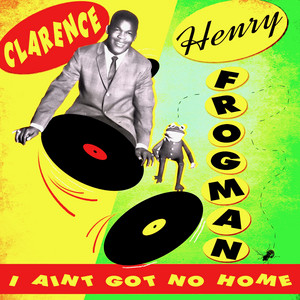 Technical engineer Brian Gibson, in the book “The Beatles Recording Sessions,” briefly describes the 27 minute "take three" that was recorded on this day: “One of the versions of 'Helter Skelter' developed into a jam which went into and then back out of a somewhat bizarre version of 'Blue Moon.'" What he may have refered to here was one of Paul's earliest songs entitled 'Just Fun,' which includes the lyrics, "There's no blue moon that I can see, there's never been in history." Along the way, he also quoted the "woh-oh-oh-oh-oh-oh" hook-line from the Clarence "Frogman" Henry song "I Ain't Got No Home," as well as the title of the song "Red Sails In The Sunset," which the group used to include in their early performances from 1960 through 1962. Technical engineer Brian Gibson, in the book “The Beatles Recording Sessions,” briefly describes the 27 minute "take three" that was recorded on this day: “One of the versions of 'Helter Skelter' developed into a jam which went into and then back out of a somewhat bizarre version of 'Blue Moon.'" What he may have refered to here was one of Paul's earliest songs entitled 'Just Fun,' which includes the lyrics, "There's no blue moon that I can see, there's never been in history." Along the way, he also quoted the "woh-oh-oh-oh-oh-oh" hook-line from the Clarence "Frogman" Henry song "I Ain't Got No Home," as well as the title of the song "Red Sails In The Sunset," which the group used to include in their early performances from 1960 through 1962.
 Brian Gibson continues discussing "take three": “The problem was, although we were recording then at 15 ips – which meant that we'd get roughly half an hour of time on the tape – the machine we were running for the tape echo was going at 30 ips, in other words 15 minutes. We were sitting up there in the control room – Ken Scott, the second engineer and myself – looking at this tape echo about to run out. The Beatles were jamming away, completely oblivious to the world and we didn't know what to do because they all had foldback in their headphones so that they could hear the echo. We knew that if we stopped it they would notice. In the end we decided that the best thing to do was stop the tape echo machine and rewind it. So at one point the echo suddenly stopped and you could hear 'bllllrrrippppp' as it was spooled back. This prompted Paul to put in some kind of clever vocal improvisation based around the chattering sound!" This was something that Paul remembered when they returned to the song a month-and-a-half later, as we'll see. Brian Gibson continues discussing "take three": “The problem was, although we were recording then at 15 ips – which meant that we'd get roughly half an hour of time on the tape – the machine we were running for the tape echo was going at 30 ips, in other words 15 minutes. We were sitting up there in the control room – Ken Scott, the second engineer and myself – looking at this tape echo about to run out. The Beatles were jamming away, completely oblivious to the world and we didn't know what to do because they all had foldback in their headphones so that they could hear the echo. We knew that if we stopped it they would notice. In the end we decided that the best thing to do was stop the tape echo machine and rewind it. So at one point the echo suddenly stopped and you could hear 'bllllrrrippppp' as it was spooled back. This prompted Paul to put in some kind of clever vocal improvisation based around the chattering sound!" This was something that Paul remembered when they returned to the song a month-and-a-half later, as we'll see.
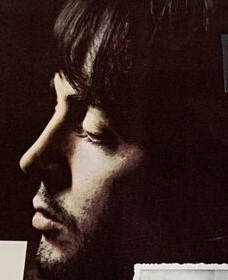 Time was taken, probably by Paul, to review the recordings done on this day in order to determine whether any of the three takes could be used for the finished product after all. This hastily scribbled guide was written on the back of an official EMI Recording Sheet and can be found in Mark Lewisohn's book “The Beatles Recording Sessions.” Notes such as “Verse O.K.,” “Middle Vocal O.K.,” “end good,” “'Dancer Dancer' (good)” and “'Do you Don't you want me' end” were jotted down but, ultimately, a decision was later made to just start again at another time. Time was taken, probably by Paul, to review the recordings done on this day in order to determine whether any of the three takes could be used for the finished product after all. This hastily scribbled guide was written on the back of an official EMI Recording Sheet and can be found in Mark Lewisohn's book “The Beatles Recording Sessions.” Notes such as “Verse O.K.,” “Middle Vocal O.K.,” “end good,” “'Dancer Dancer' (good)” and “'Do you Don't you want me' end” were jotted down but, ultimately, a decision was later made to just start again at another time.
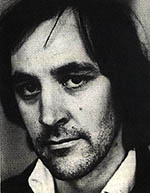 It wasn't until a month and a half later, September 9th, 1968, that The Beatles decided to bring the song back to EMI Studio Two and give it another go. Documentation shows the session beginning at a usual 7 pm with Chris Thomas officially in the producer's chair for the first time, although the results of this session show that The Beatles were most definitely in control. As Mark Lewisohn relates in his book "The Beatles Recording Sessions," "by the autumn of 1968, The Beatles were much in control of their own music, its production and remixes. It is doubtful on this night, for example, that anyone but the group was guiding the session." It wasn't until a month and a half later, September 9th, 1968, that The Beatles decided to bring the song back to EMI Studio Two and give it another go. Documentation shows the session beginning at a usual 7 pm with Chris Thomas officially in the producer's chair for the first time, although the results of this session show that The Beatles were most definitely in control. As Mark Lewisohn relates in his book "The Beatles Recording Sessions," "by the autumn of 1968, The Beatles were much in control of their own music, its production and remixes. It is doubtful on this night, for example, that anyone but the group was guiding the session."
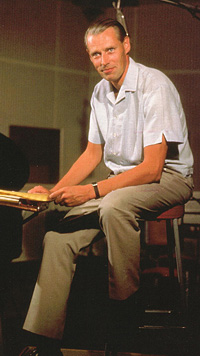 Chris Thomas relates: “I came back from my holiday and there was a note from George (Martin) on my desk. 'Chris: Hope you had a nice holiday; I'm off on mine now. Make yourself available to The Beatles. Neil (Aspinall) and Mal (Evans) know you're coming down.' It took a while for The Beatles to accept me. Paul was the first one to walk in – I was sitting in the corner wearing a suit and tie! - and he said, 'What are you doing here?' I felt such an idiot, but managed to blurt, 'Didn't George tell you?' 'No.' 'Well, George has suggested I come down and help out.' Paul's reply was, 'Well, if you wanna produce us you can produce us. If you don't, we might just tell you to f**k off!' That was encouragement? I couldn't speak after that...” Chris Thomas relates: “I came back from my holiday and there was a note from George (Martin) on my desk. 'Chris: Hope you had a nice holiday; I'm off on mine now. Make yourself available to The Beatles. Neil (Aspinall) and Mal (Evans) know you're coming down.' It took a while for The Beatles to accept me. Paul was the first one to walk in – I was sitting in the corner wearing a suit and tie! - and he said, 'What are you doing here?' I felt such an idiot, but managed to blurt, 'Didn't George tell you?' 'No.' 'Well, George has suggested I come down and help out.' Paul's reply was, 'Well, if you wanna produce us you can produce us. If you don't, we might just tell you to f**k off!' That was encouragement? I couldn't speak after that...”
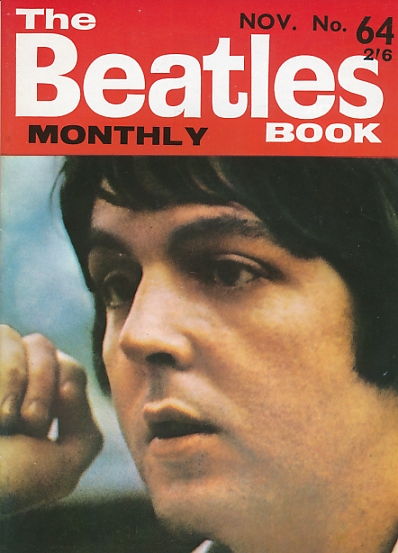 The Beatles proceeded to record 18 more takes of “Helter Skelter” on this day, takes 4 through 21, with an even more raucous sound than they had attempted back on July 18th, but at a more palatable length for inclusion on an album: three to four minutes instead of 27! It was on this day that Paul prodded his bandmates to record "the dirtiest, loudest rock 'n' roll track you've ever heard," as he later stated in interviews. As Paul describes in his book "The Lyrics," "I came into the studio and said to the guys, 'Let's just see how loud we can get and how raucous. Let's try to make the meters peak.'" Mal Evans noted regarding this song in the November edition of "The Beatles Book Monthly" that "John plays bass which is unusual," this being recorded on track one of the four-track tape. Ringo's drums were on track two, both Paul and George's electric guitars, along with extensive amplifier feedback, were together on track three, and Paul's guide vocals, with extensive delay added, were on track four. It appears that George had mastered the use of his Bartell fretless electric guitar, this being heard on the finished recording as recorded on this day. The Beatles proceeded to record 18 more takes of “Helter Skelter” on this day, takes 4 through 21, with an even more raucous sound than they had attempted back on July 18th, but at a more palatable length for inclusion on an album: three to four minutes instead of 27! It was on this day that Paul prodded his bandmates to record "the dirtiest, loudest rock 'n' roll track you've ever heard," as he later stated in interviews. As Paul describes in his book "The Lyrics," "I came into the studio and said to the guys, 'Let's just see how loud we can get and how raucous. Let's try to make the meters peak.'" Mal Evans noted regarding this song in the November edition of "The Beatles Book Monthly" that "John plays bass which is unusual," this being recorded on track one of the four-track tape. Ringo's drums were on track two, both Paul and George's electric guitars, along with extensive amplifier feedback, were together on track three, and Paul's guide vocals, with extensive delay added, were on track four. It appears that George had mastered the use of his Bartell fretless electric guitar, this being heard on the finished recording as recorded on this day.
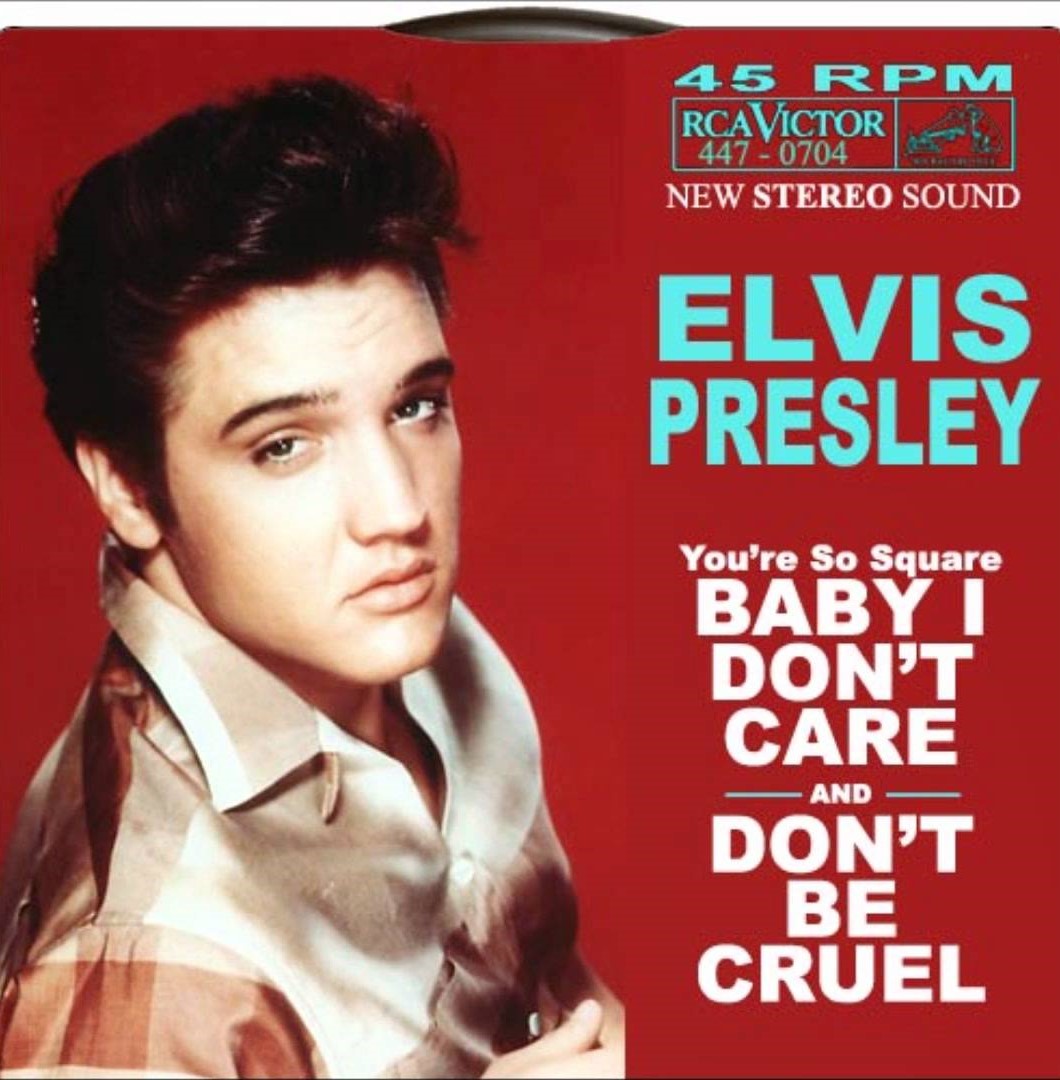 At the beginning of this session, Paul recalled the tape-spooling effect that occurred during the 27 minute rehearsal from the previous session on July 18th, 1968. As captured on tape, he stated, "At the end, if it's gone well, do that winding back the tape thing." Also, when Paul heard the vocal delay in his headphones, he led the band through a quick performance of the Elvis Presley classic "(You're So Square) Baby, I Don't Care," as originally included in his 1957 movie "Jailhouse Rock" and later featured on Buddy Holly's oponymous solo album from 1958. After it concludes, Paul does a quick Elvis impersonation, quipping, "Hold it fellas!" as heard on his Sun Records recording of "Milkcow Blues Boogie." The Beatles then get down to business, recording the first of their 18 takes of the rhythm track of "Helter Skelter" on this day. At the beginning of this session, Paul recalled the tape-spooling effect that occurred during the 27 minute rehearsal from the previous session on July 18th, 1968. As captured on tape, he stated, "At the end, if it's gone well, do that winding back the tape thing." Also, when Paul heard the vocal delay in his headphones, he led the band through a quick performance of the Elvis Presley classic "(You're So Square) Baby, I Don't Care," as originally included in his 1957 movie "Jailhouse Rock" and later featured on Buddy Holly's oponymous solo album from 1958. After it concludes, Paul does a quick Elvis impersonation, quipping, "Hold it fellas!" as heard on his Sun Records recording of "Milkcow Blues Boogie." The Beatles then get down to business, recording the first of their 18 takes of the rhythm track of "Helter Skelter" on this day.
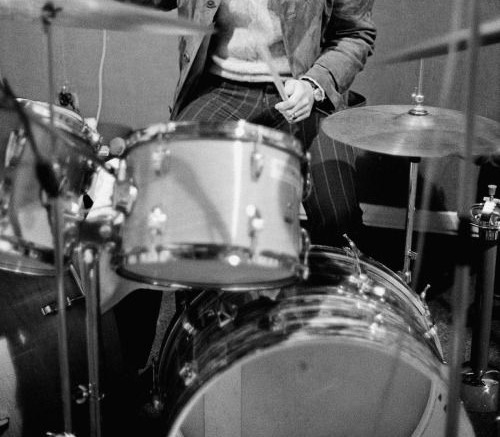 As for the sound generated at this session, Brian Gibson remembers it as “out of control," adding: "They were completely out of their heads that night. But, as usual, a blind eye was turned to what The Beatles did in the studio. Everyone knew what substances they were taking but they were really 'a law unto themselves' in the studio. As long as they didn't do anything too outrageous, things were tolerated." In the book "Anthology," Ringo remembered this as "a track we did in total madness and hysterics in the studio. Sometimes you just had to shake out the jams...Paul started screaming and shouting and made it up on the spot." Paul recalled the session as, "'Guitars: Can we have them sound louder? The drums: Louder!' That was really all I wanted to do, make a very loud, raunchy rock 'n' roll record with The Beatles, which it is." Paul later added, "I went into the studio and said, 'Hey, look, I've read this thing. Let's do it!' We got the engineers and (the producer) to hike up the drum sound and really get it as loud and horrible as it could and we played it and said, 'No, it still sounds too safe, it's got to get louder and dirtier.' We tried everything we could to dirty it up." In his book "The Lyrics," Paul adds: "The distortion we continued to be interested in was the sound distortion we could create by using techniques we developed with the brilliant engineers at Abbey Road...We had played the hell out of it, so maybe Manson did detect something infernal in it." As for the sound generated at this session, Brian Gibson remembers it as “out of control," adding: "They were completely out of their heads that night. But, as usual, a blind eye was turned to what The Beatles did in the studio. Everyone knew what substances they were taking but they were really 'a law unto themselves' in the studio. As long as they didn't do anything too outrageous, things were tolerated." In the book "Anthology," Ringo remembered this as "a track we did in total madness and hysterics in the studio. Sometimes you just had to shake out the jams...Paul started screaming and shouting and made it up on the spot." Paul recalled the session as, "'Guitars: Can we have them sound louder? The drums: Louder!' That was really all I wanted to do, make a very loud, raunchy rock 'n' roll record with The Beatles, which it is." Paul later added, "I went into the studio and said, 'Hey, look, I've read this thing. Let's do it!' We got the engineers and (the producer) to hike up the drum sound and really get it as loud and horrible as it could and we played it and said, 'No, it still sounds too safe, it's got to get louder and dirtier.' We tried everything we could to dirty it up." In his book "The Lyrics," Paul adds: "The distortion we continued to be interested in was the sound distortion we could create by using techniques we developed with the brilliant engineers at Abbey Road...We had played the hell out of it, so maybe Manson did detect something infernal in it."
 By "take 12," Mal Evans began playing rudimentary trumpet as captured onto track four as well as McCartney's guide vocal. The trumpet playing was not present, however, on "take 17," which can be heard in its entirety due to its inclusion on the Super Deluxe 50th Anniversary "White Album" box set. It begins with Paul instructing John on how he wanted the bass to be played during the introduction of the song. "Even though I may not be syncing it moving along, I'll just try and, sort of, 'When I get to the bottom, I...' and then you just imagine it." John starts to clarify, "So, anyway...," before Paul interjects, "Have extra on the first one, so it's like..." and then demonstrates on his guitar what John should do on bass. Paul then experiments with his vocal reverb ("whoh, whoh, whoh" etc.) while guitar feedback fills the room. Just after the engineer anounces "take 17," Paul counts down the song and sings the introductory line which still includes the line "top of the hill / where I stop and I turn and I give you a pill," which indicates that the singer still hadn't decided which lyrics should be sung. No guitar leads are heard during this rhythm track, these all being added as overdubs at a later time. Paul seemed quite pleased with this performance, anouncing emphatically at its conclusion, "Keep that one - Mark it fab!" By "take 12," Mal Evans began playing rudimentary trumpet as captured onto track four as well as McCartney's guide vocal. The trumpet playing was not present, however, on "take 17," which can be heard in its entirety due to its inclusion on the Super Deluxe 50th Anniversary "White Album" box set. It begins with Paul instructing John on how he wanted the bass to be played during the introduction of the song. "Even though I may not be syncing it moving along, I'll just try and, sort of, 'When I get to the bottom, I...' and then you just imagine it." John starts to clarify, "So, anyway...," before Paul interjects, "Have extra on the first one, so it's like..." and then demonstrates on his guitar what John should do on bass. Paul then experiments with his vocal reverb ("whoh, whoh, whoh" etc.) while guitar feedback fills the room. Just after the engineer anounces "take 17," Paul counts down the song and sings the introductory line which still includes the line "top of the hill / where I stop and I turn and I give you a pill," which indicates that the singer still hadn't decided which lyrics should be sung. No guitar leads are heard during this rhythm track, these all being added as overdubs at a later time. Paul seemed quite pleased with this performance, anouncing emphatically at its conclusion, "Keep that one - Mark it fab!"
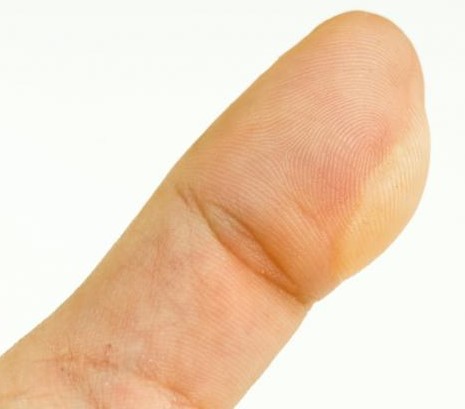 They did continue to record four more takes of the rhythm track, however, finally deciding that the last one, "take 21," was the keeper. Mal Evans decided to pick up the trumpet once again on this extensive take, which concluded in a very interesting way. Ringo finally brought the song to an end by performing various drum rolls, crashing his cymbals three times, reportedly throwing his sticks across the studio, and after John asks, "How's that," Ringo screams "I've got blisters on my fingers!" Paul relates, "That wasn't a joke put-on: his hands were actually bleeding at the end of the take, he'd been drumming so ferociously. We did work very hard on that track." In his book "The Lyrics," McCartney adds: "The recording process for 'Helter Skelter' was endless, a feat of endurance. So much so that Ringo, at the end of it, shouted out something about having blisters on his fingers. It was that kind of session." They did continue to record four more takes of the rhythm track, however, finally deciding that the last one, "take 21," was the keeper. Mal Evans decided to pick up the trumpet once again on this extensive take, which concluded in a very interesting way. Ringo finally brought the song to an end by performing various drum rolls, crashing his cymbals three times, reportedly throwing his sticks across the studio, and after John asks, "How's that," Ringo screams "I've got blisters on my fingers!" Paul relates, "That wasn't a joke put-on: his hands were actually bleeding at the end of the take, he'd been drumming so ferociously. We did work very hard on that track." In his book "The Lyrics," McCartney adds: "The recording process for 'Helter Skelter' was endless, a feat of endurance. So much so that Ringo, at the end of it, shouted out something about having blisters on his fingers. It was that kind of session."
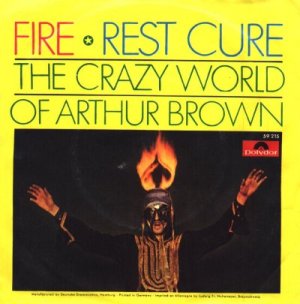 Paul overdubbed his exciting lead vocals onto this take before the session was complete. Chris Thomas recalls one interesting event that occurred during this vocal overdub: “While Paul was doing his vocal, George Harrison had set fire to an ashtray and was running around the studio with it above his head, doing an Arthur Brown! All in all, a pretty undisciplined session, you could say!” George was doing this as inspired by Paul's spirited lead vocals, reminding him of the recent hit “Fire” by The Crazy World Of Arthur Brown, which hit the #1 spot in Britain in August of that year and had captured the world by storm. Arthur Brown was known for his flamboyant TV performances at the time which included a flaming headpiece. Somewhat forgotten now, it was all the rage at the time. By 2:30 am the following morning, all involved called it a night. Paul overdubbed his exciting lead vocals onto this take before the session was complete. Chris Thomas recalls one interesting event that occurred during this vocal overdub: “While Paul was doing his vocal, George Harrison had set fire to an ashtray and was running around the studio with it above his head, doing an Arthur Brown! All in all, a pretty undisciplined session, you could say!” George was doing this as inspired by Paul's spirited lead vocals, reminding him of the recent hit “Fire” by The Crazy World Of Arthur Brown, which hit the #1 spot in Britain in August of that year and had captured the world by storm. Arthur Brown was known for his flamboyant TV performances at the time which included a flaming headpiece. Somewhat forgotten now, it was all the rage at the time. By 2:30 am the following morning, all involved called it a night.
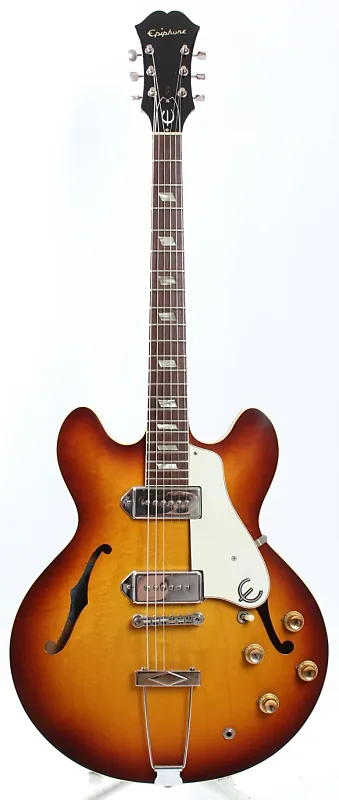 They reconvened the following day, September 10th, 1968, in EMI Studio Two at around 7 pm to complete the overdubs on the song and bring it to its complete state. Interestingly, it was Paul, not George, who overdubbed some strategic lead guitar parts, while John added some piano and Paul, George and John added backing vocals, including vocalizations of the name "Fanny Craddock," who was the host of a popular British TV cooking program in 1968. Mal Evans, in the November 1968 issue of “The Beatles Monthly Book,” describes another interesting overdub recorded on this day. “The backing features The Two Harrys on brass. That's Mal Evans on trumpet and John Lennon on saxophone!” It's hard to miss these elements in the cacophony of sound on the finished recording, especially during the final minute or so where Paul's initial guide vocal track still contained Mal's squeaky trumpet wails. By 3 am the following morning the session was complete, as was the recording of “Helter Skelter.” They reconvened the following day, September 10th, 1968, in EMI Studio Two at around 7 pm to complete the overdubs on the song and bring it to its complete state. Interestingly, it was Paul, not George, who overdubbed some strategic lead guitar parts, while John added some piano and Paul, George and John added backing vocals, including vocalizations of the name "Fanny Craddock," who was the host of a popular British TV cooking program in 1968. Mal Evans, in the November 1968 issue of “The Beatles Monthly Book,” describes another interesting overdub recorded on this day. “The backing features The Two Harrys on brass. That's Mal Evans on trumpet and John Lennon on saxophone!” It's hard to miss these elements in the cacophony of sound on the finished recording, especially during the final minute or so where Paul's initial guide vocal track still contained Mal's squeaky trumpet wails. By 3 am the following morning the session was complete, as was the recording of “Helter Skelter.”
.jpg) The released mono mix of the song was made on September 17th, 1968 in the control room of EMI Studio Two by Chris Thomas and engineers Ken Scott and Mike Sheady. They went the conventional route by performing a simple fade of the song at 3:36, omitting Ringo's “blisters” remark entirely. The background vocals were placed somewhat prominently in the mix while care was given to fade out extraneous chatter and sounds when the song comes to a halt at the three minute mark. The released mono mix of the song was made on September 17th, 1968 in the control room of EMI Studio Two by Chris Thomas and engineers Ken Scott and Mike Sheady. They went the conventional route by performing a simple fade of the song at 3:36, omitting Ringo's “blisters” remark entirely. The background vocals were placed somewhat prominently in the mix while care was given to fade out extraneous chatter and sounds when the song comes to a halt at the three minute mark.
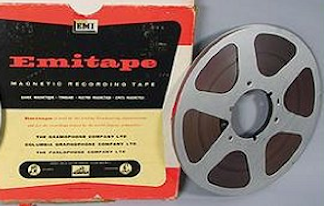 The 27 minute version of the song they recorded on July 18th, 1968 may have been deemed unusable but it was not forgotten by Paul. On October 9th, 1968, a tape copy of that version was made in the wee hours of the morning for Paul to have for his private collection. The 27 minute version of the song they recorded on July 18th, 1968 may have been deemed unusable but it was not forgotten by Paul. On October 9th, 1968, a tape copy of that version was made in the wee hours of the morning for Paul to have for his private collection.
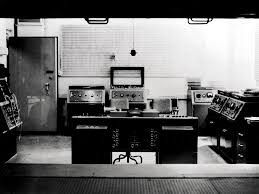 The stereo mix was created on October 12th, 1968 in the control room of EMI Studio Two by George Martin and engineers Ken Scott and John Smith, and at least Paul if not other Beatles in attendance. Five attempts were made at creating this difficult mix, the fifth try, no doubt, being the one used on the released album. The backing vocals were pushed more to the background, Paul's lead guitar in the instrumental break was brought up higher in the mix, and the chatter and extraneous sounds during the break at the three minute mark were left in this time around. And, most notably, a decision was made to fade the song back up for the listener to hear its full conclusion as well as Ringo's “blisters” cry. The stereo mix was created on October 12th, 1968 in the control room of EMI Studio Two by George Martin and engineers Ken Scott and John Smith, and at least Paul if not other Beatles in attendance. Five attempts were made at creating this difficult mix, the fifth try, no doubt, being the one used on the released album. The backing vocals were pushed more to the background, Paul's lead guitar in the instrumental break was brought up higher in the mix, and the chatter and extraneous sounds during the break at the three minute mark were left in this time around. And, most notably, a decision was made to fade the song back up for the listener to hear its full conclusion as well as Ringo's “blisters” cry.
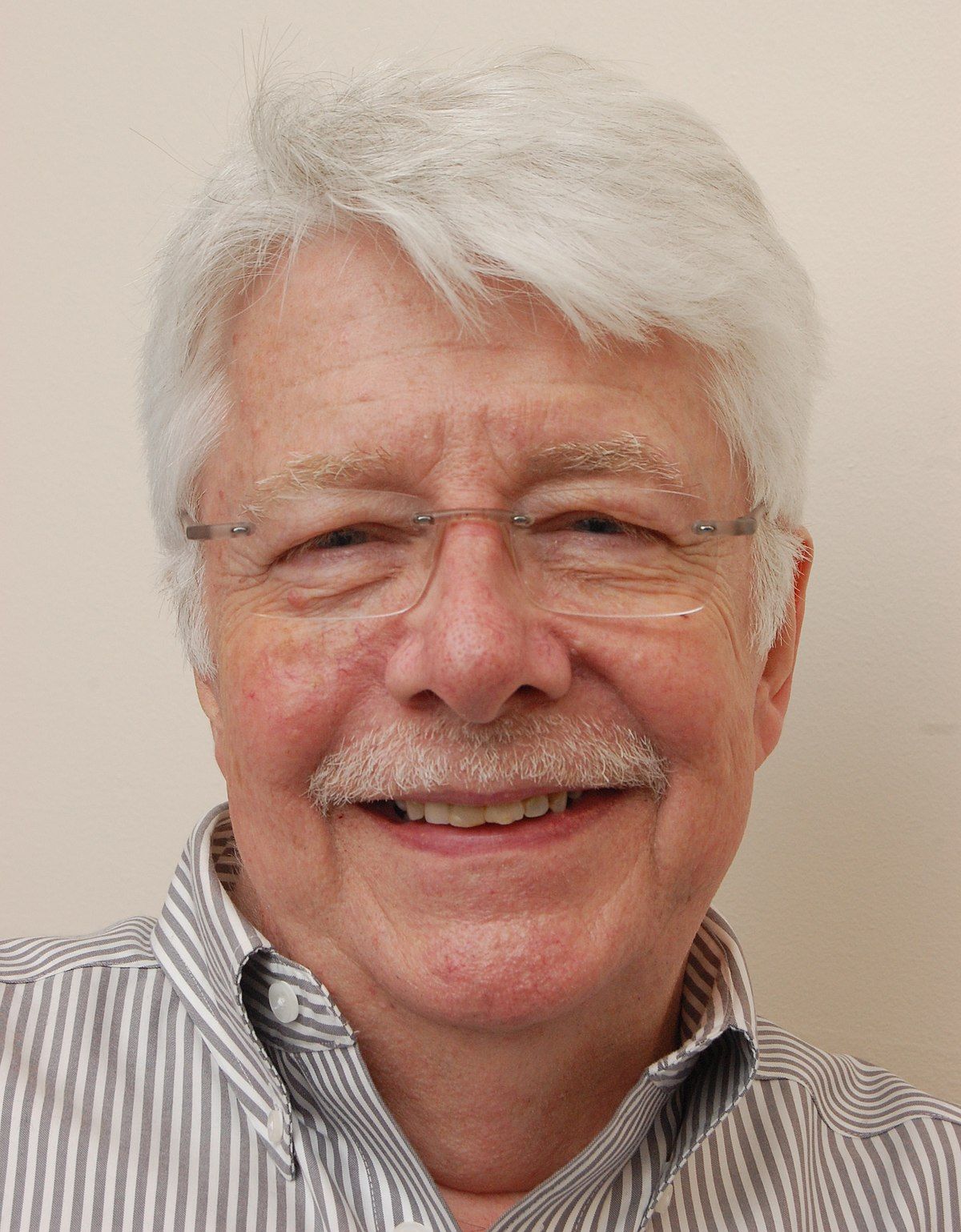 In 2025, engineer Ken Scott explained the details of creating this stereo mix to YouTube host Rick Beato. "So, it's basically the same (as the mono mix) except I just pull things apart a little. Going through it, we come to the end. I fade it down the same way I did on the mono. And then Paul says, 'OK, now fade it back up.' 'What?' 'Fade it back up.' So I start to fade it back up, get it up, and he says, 'OK, now fade it back down.' I fade it back down. He says, 'now bring it up quick.' 'I got blisters on my fingers!' (Paul shouts) 'DOWN!' boom! I look at him and say, 'What the f*ck was that all about?' He said, 'Well, we've heard from fans that there are differences between the mono and the stereo, and we thought that if we actually purposely made some differences, we'd sell twice as many records." In 2025, engineer Ken Scott explained the details of creating this stereo mix to YouTube host Rick Beato. "So, it's basically the same (as the mono mix) except I just pull things apart a little. Going through it, we come to the end. I fade it down the same way I did on the mono. And then Paul says, 'OK, now fade it back up.' 'What?' 'Fade it back up.' So I start to fade it back up, get it up, and he says, 'OK, now fade it back down.' I fade it back down. He says, 'now bring it up quick.' 'I got blisters on my fingers!' (Paul shouts) 'DOWN!' boom! I look at him and say, 'What the f*ck was that all about?' He said, 'Well, we've heard from fans that there are differences between the mono and the stereo, and we thought that if we actually purposely made some differences, we'd sell twice as many records."
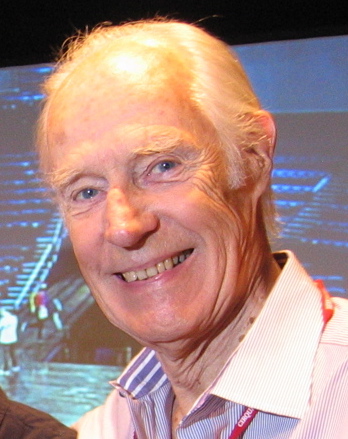 Sometime between 2004 and 2006, producers George Martin and his son Giles returned to the original master tapes of "Helter Skelter" to add some highly delayed vocals from the song onto a new track entitled "Being For The Benefit Of Mr. Kite! / I Want You (She's So Heavy) / Helter Skelter" which appeared on the album "Love." Slight elements of "Helter Skelter" were also infused into their newly created mashup for the track "Octopus's Garden." Both of these recordings were used as a backdrop during the famous "Beatles Love" Cirque du Soleil shows. Sometime between 2004 and 2006, producers George Martin and his son Giles returned to the original master tapes of "Helter Skelter" to add some highly delayed vocals from the song onto a new track entitled "Being For The Benefit Of Mr. Kite! / I Want You (She's So Heavy) / Helter Skelter" which appeared on the album "Love." Slight elements of "Helter Skelter" were also infused into their newly created mashup for the track "Octopus's Garden." Both of these recordings were used as a backdrop during the famous "Beatles Love" Cirque du Soleil shows.
 Sometime in 2018, Giles Martin and engineer Sam Okell returned to the master tapes of "Helter Skelter" to create a vibrant new stereo mix of the song as well as stereo mixes of the 27 minute "take two" as recorded on July 18th, 1968, and "take 17" from September 9th of that year. These new mixes were included on various 50th Anniversary editions of the "White Album" released in November of 2018. Sometime in 2018, Giles Martin and engineer Sam Okell returned to the master tapes of "Helter Skelter" to create a vibrant new stereo mix of the song as well as stereo mixes of the 27 minute "take two" as recorded on July 18th, 1968, and "take 17" from September 9th of that year. These new mixes were included on various 50th Anniversary editions of the "White Album" released in November of 2018.
A recording of “Helter Skelter” by Paul and his band during one of his performances at Citi Field in New York City between July 17th through 21st, 2009, was featured on his album “Good Evening New York City.” This performance went on to win a Grammy for “Best Solo Rock Vocal Performance” at the 53rd Grammy Awards.
Song Structure and Style
The structure of the song can be parsed out as 'intro/ verse/ chorus/ verse/ chorus/ chorus (solo)/ intro/ verse/ chorus/ conclusion' (or abcbccabcd). As has become common in their later catalog, differences occur along the way, this time expecially concerning the measures within the various sections of the song.
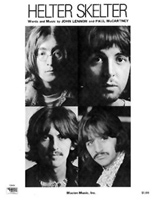 Although the mono version has gained notoriety as the years have progressed, the stereo mix is still considered the definitive version. Therefore, this review will focus primarily on the stereo version with noteworthy mention of the mono mix when needed. Although the mono version has gained notoriety as the years have progressed, the stereo mix is still considered the definitive version. Therefore, this review will focus primarily on the stereo version with noteworthy mention of the mono mix when needed.
The startling intro is six measures long and begins with only Paul's hammering guitar in the first measure. Our footing for where the downbeat is can be solved by recognizing that the first guitar chord, the one that slides down the neck, is only played in anticipation of the one-beat of the first measure. Therefore, the first lower guitar chord in the successive 16th-note pattern is actually the downbeat. It all fits together uniformly when Paul starts singing at the end of this first measure.
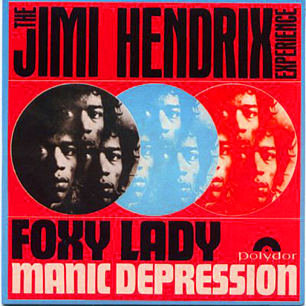 As noted above, the second measure of this intro adds Paul's single-tracked lead vocals, then the third measure adds Ringo's 16th-note snare drum beats played somewhat quietly while Paul's vocals rise in intensity. The fourth measure displays Ringo's snare drum beats getting progressively louder to accompany Paul's manic vocals which are now rising to fever pitch on the lyric “and I see you agaaaain.” This acts as a signal for the full band arrangement to kick in, which features Paul's lead guitar, Ringo's cymbal-smashing drum beat, John's thumping bass guitar, George's continuing guitar work and, somewhere deep in the mix, John's overdubbed piano. All this is treated with rich reverb, echo, ADT (“Artificial Double-Tracking”) and distortion per Paul's request, his approval symbolically expressed by his “She Loves You” reprise of “yeah, yeah, yeah” at the end of the fifth measure. The sixth measure of the introduction begins the hypnotic and somewhat out-of-tune guitar phrases that wind through the rest of the song. This repetitive guitar phrase is undoubtedly The Beatles attempt at capturing the feel of the Jimi Hendrix song “Foxy Lady,” which was the opening track of his first British album “Are You Experienced,” all four Beatles being huge fans of this artist. As noted above, the second measure of this intro adds Paul's single-tracked lead vocals, then the third measure adds Ringo's 16th-note snare drum beats played somewhat quietly while Paul's vocals rise in intensity. The fourth measure displays Ringo's snare drum beats getting progressively louder to accompany Paul's manic vocals which are now rising to fever pitch on the lyric “and I see you agaaaain.” This acts as a signal for the full band arrangement to kick in, which features Paul's lead guitar, Ringo's cymbal-smashing drum beat, John's thumping bass guitar, George's continuing guitar work and, somewhere deep in the mix, John's overdubbed piano. All this is treated with rich reverb, echo, ADT (“Artificial Double-Tracking”) and distortion per Paul's request, his approval symbolically expressed by his “She Loves You” reprise of “yeah, yeah, yeah” at the end of the fifth measure. The sixth measure of the introduction begins the hypnotic and somewhat out-of-tune guitar phrases that wind through the rest of the song. This repetitive guitar phrase is undoubtedly The Beatles attempt at capturing the feel of the Jimi Hendrix song “Foxy Lady,” which was the opening track of his first British album “Are You Experienced,” all four Beatles being huge fans of this artist.
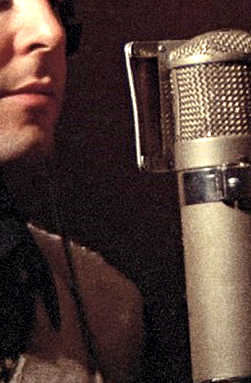 The first verse is eight measures long and rests heavily on this hypnotic guitar-based vamp with Paul's high-energy single-tracked vocals. Ringo puts in hard-hitting but simple drum fills at the end of measures three and six, while he stops the action in the seventh measure for a uniform 'Beatles break” during Paul's line “you may be a lover but you ain't no dancer.” Ringo does, however, put in another drum fill during these final syllables from Paul to usher the band back in for the eighth measure. Background vocals from John, Paul and George are first detected in measure three, this being a simple “aaah” harmony as a backdrop to Paul's lead vocal line. This is repeated in measure five but then continue with the changing chords into measures six and then seven where they trail off with the 'Beatles break.' The eighth measure has these background vocals singing staccato in eighth notes for the remainder of the verse. These harmonies are barely noticeable in the stereo mix but are slightly more prominent in the mono mix. The first verse is eight measures long and rests heavily on this hypnotic guitar-based vamp with Paul's high-energy single-tracked vocals. Ringo puts in hard-hitting but simple drum fills at the end of measures three and six, while he stops the action in the seventh measure for a uniform 'Beatles break” during Paul's line “you may be a lover but you ain't no dancer.” Ringo does, however, put in another drum fill during these final syllables from Paul to usher the band back in for the eighth measure. Background vocals from John, Paul and George are first detected in measure three, this being a simple “aaah” harmony as a backdrop to Paul's lead vocal line. This is repeated in measure five but then continue with the changing chords into measures six and then seven where they trail off with the 'Beatles break.' The eighth measure has these background vocals singing staccato in eighth notes for the remainder of the verse. These harmonies are barely noticeable in the stereo mix but are slightly more prominent in the mono mix.
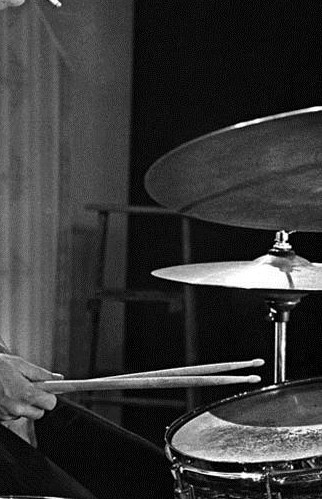 The chorus is six measures long and continues the same instrumentation as the verses but with Paul's additional lead guitar taking center stage primarily to fill in the gaps between the thrice repeated exclamations of “Helter Skelter.” He follows the lyric each time with a quickly descending guitar phrase, simulating the children's slide that the song's lyrics are based around. The fourth measure marks another 'Beatles break' which features an effective rising electric guitar note from Paul while Ringo puts in another thundering drum fill. The remaining two measures comprise a simple return to the hypnotic guitar vamp heard earlier and end with another Ringo drum fill. Paul's vocal hi-jinx include a “yeah” at the beginning of the fourth measure and one of his signature “wooo”s at the beginning of the fifth measure. The chorus is six measures long and continues the same instrumentation as the verses but with Paul's additional lead guitar taking center stage primarily to fill in the gaps between the thrice repeated exclamations of “Helter Skelter.” He follows the lyric each time with a quickly descending guitar phrase, simulating the children's slide that the song's lyrics are based around. The fourth measure marks another 'Beatles break' which features an effective rising electric guitar note from Paul while Ringo puts in another thundering drum fill. The remaining two measures comprise a simple return to the hypnotic guitar vamp heard earlier and end with another Ringo drum fill. Paul's vocal hi-jinx include a “yeah” at the beginning of the fourth measure and one of his signature “wooo”s at the beginning of the fifth measure.
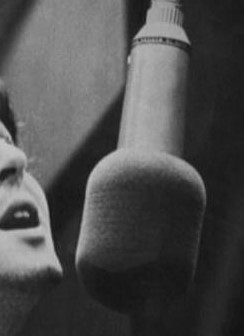 The second verse that follows is only seven measures long this time, the sixth measure from the first verse being omitted for some reason. Instrumentation is the same as in the first verse however, the only differences along the way are Ringo's drum fill appearing at the end of the second measure instead of measures three and six as before and the background harmonies now filling in the gaps whenever Paul is not singing lead vocals instead of at the same time as in the first verse. During the final measure Paul shouts “Look Out!” while the background vocalists are reprising their staccato line from the first verse. As before, the mono mix features these backing vocals at a somewhat higher level. The second verse that follows is only seven measures long this time, the sixth measure from the first verse being omitted for some reason. Instrumentation is the same as in the first verse however, the only differences along the way are Ringo's drum fill appearing at the end of the second measure instead of measures three and six as before and the background harmonies now filling in the gaps whenever Paul is not singing lead vocals instead of at the same time as in the first verse. During the final measure Paul shouts “Look Out!” while the background vocalists are reprising their staccato line from the first verse. As before, the mono mix features these backing vocals at a somewhat higher level.
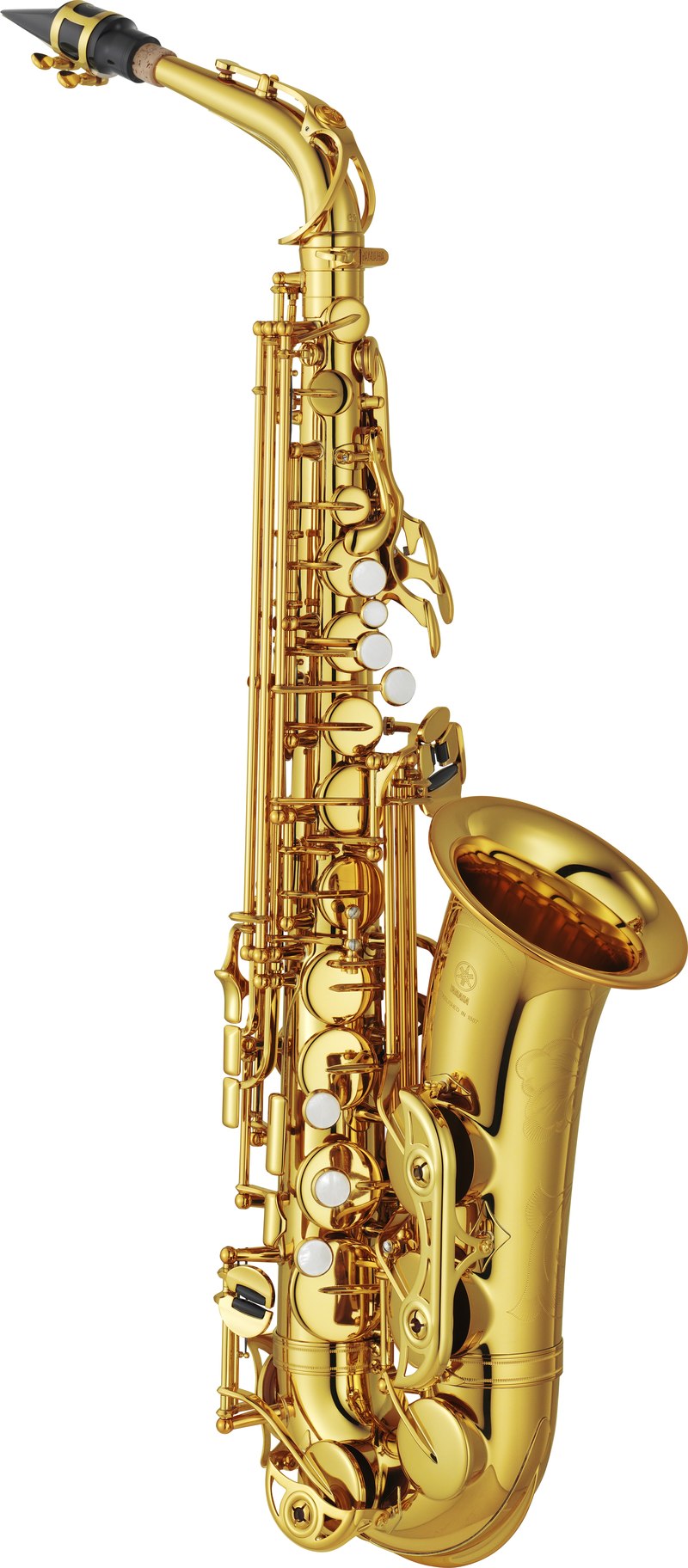 The chorus is now repeated with identical instrumentation from before, differences include Paul moaning “whoa” in the fourth measure and then shouting “Look Out!, 'cause here she come” during the fifth and six measures, then chuckling at the very end of the final measure. John puts in an inventive 16th-note higher register bass figure in the fifth measure and then lowers it an octave for the sixth measure, possibly a suggestion from Paul. A curious squawking sound, undoubtedly the first evidence of either John on saxophone or Mal Evans on trumpet, is first heard in the song in the fifth and sixth measures here. A couple of introductory chords from Paul's soon-to-be-heard lead guitar part are also heard in the sixth measure of this chorus. The chorus is now repeated with identical instrumentation from before, differences include Paul moaning “whoa” in the fourth measure and then shouting “Look Out!, 'cause here she come” during the fifth and six measures, then chuckling at the very end of the final measure. John puts in an inventive 16th-note higher register bass figure in the fifth measure and then lowers it an octave for the sixth measure, possibly a suggestion from Paul. A curious squawking sound, undoubtedly the first evidence of either John on saxophone or Mal Evans on trumpet, is first heard in the song in the fifth and sixth measures here. A couple of introductory chords from Paul's soon-to-be-heard lead guitar part are also heard in the sixth measure of this chorus.
 A repeat of the chorus is then heard, this being used as a quick guitar solo from Paul. This chorus, however, is only four measures long, omitting the final two vamping measures. The background vocalists are heard in full force throughout these measures, sustaining an “aaah” that falls dramatically in a descending way in the final measure while Ringo puts in his usual drum fill. A repeat of the song's intro is then heard, only five measures being utilized this time instead of six because of there being no need for the hammering solo guitar 16th-notes as heard at the beginning of the song. Instead, we hear John's Fender Bass VI alternating octaves on 16th-notes up and down in measures one through three while Paul repeats the lyrics from the initial intro. Full instrumentation as in the rest of the song encompasses this repeat of the intro, Ringo playing a regular drum beat while reprising his jack-hammer 16th-note snare drum fill in the third measure only this time around. A couple of stray lead guitar notes from Paul are heard in the second and third measures, most noticeable in the mono mix. Starting on the word “again,” the background vocalists kick in as well, holding out that same word into the fifth measure, this also being more prominently heard in the mono mix. A repeat of the chorus is then heard, this being used as a quick guitar solo from Paul. This chorus, however, is only four measures long, omitting the final two vamping measures. The background vocalists are heard in full force throughout these measures, sustaining an “aaah” that falls dramatically in a descending way in the final measure while Ringo puts in his usual drum fill. A repeat of the song's intro is then heard, only five measures being utilized this time instead of six because of there being no need for the hammering solo guitar 16th-notes as heard at the beginning of the song. Instead, we hear John's Fender Bass VI alternating octaves on 16th-notes up and down in measures one through three while Paul repeats the lyrics from the initial intro. Full instrumentation as in the rest of the song encompasses this repeat of the intro, Ringo playing a regular drum beat while reprising his jack-hammer 16th-note snare drum fill in the third measure only this time around. A couple of stray lead guitar notes from Paul are heard in the second and third measures, most noticeable in the mono mix. Starting on the word “again,” the background vocalists kick in as well, holding out that same word into the fifth measure, this also being more prominently heard in the mono mix.
The third and final verse then appears, this also being seven measures in length. The elements and structure are virtually identical to the second verse, lyrics and all. Differences include Ringo adding an additional drum break in the fourth measure as well as an overdubbed lead guitar line from Paul in the second measure.
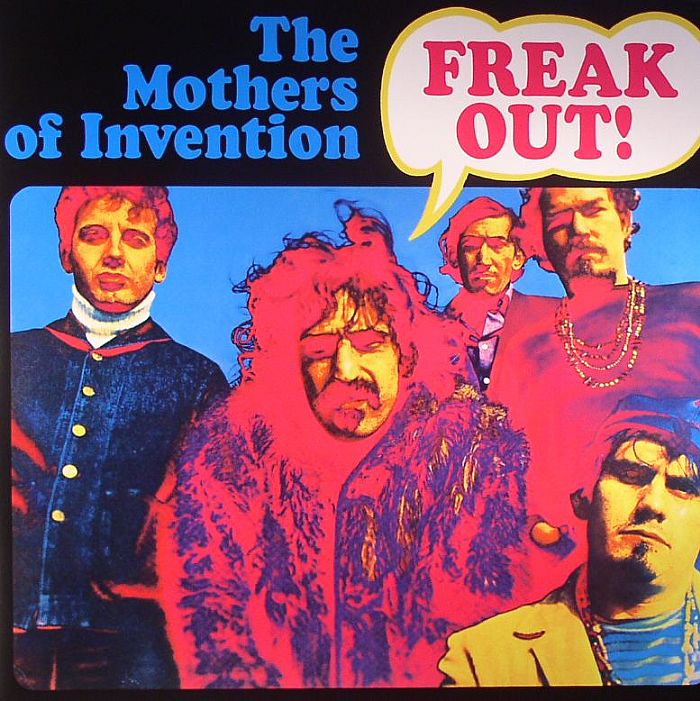 This is followed by the final chorus, this one being only four measures long. The 'Beatles break' in the fourth measure displays the engineering team stepping up the echo effects to begin a “Freak Out” section of the song (see the 1966 album "Freak Out!" by The Mothers Of Invention as the beginning of this trend) while Paul belts out a blood-curdling “Look Out!” This is followed by the final chorus, this one being only four measures long. The 'Beatles break' in the fourth measure displays the engineering team stepping up the echo effects to begin a “Freak Out” section of the song (see the 1966 album "Freak Out!" by The Mothers Of Invention as the beginning of this trend) while Paul belts out a blood-curdling “Look Out!”
What follows next is the song's conclusion which in actuality defies measure-counting and definition, although we'll give it a shot. This section can easily be divided up into two sections, interrupted by an indefinable open space of voices, feedback and other sounds.
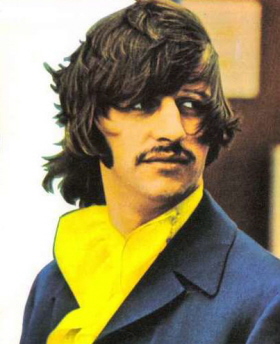 Section One: This nine-measure section of vamping with full instrumentation features Paul's ad-lib vocals “Helter Skelter / She's coming down fast / yes she is / yes she is / coming down fast / can you hear me speaking?, woooh.” Ringo puts in a drum fill on every even numbered measure until he crashes to a conclusion at what would be the ninth measure. Paul's overdubbed lead guitar mimicks his descending guitar lines in the chorus for measures two through eight while another lead guitar is present (George?) playing a strange descending passage in measures five and six. Section One: This nine-measure section of vamping with full instrumentation features Paul's ad-lib vocals “Helter Skelter / She's coming down fast / yes she is / yes she is / coming down fast / can you hear me speaking?, woooh.” Ringo puts in a drum fill on every even numbered measure until he crashes to a conclusion at what would be the ninth measure. Paul's overdubbed lead guitar mimicks his descending guitar lines in the chorus for measures two through eight while another lead guitar is present (George?) playing a strange descending passage in measures five and six.
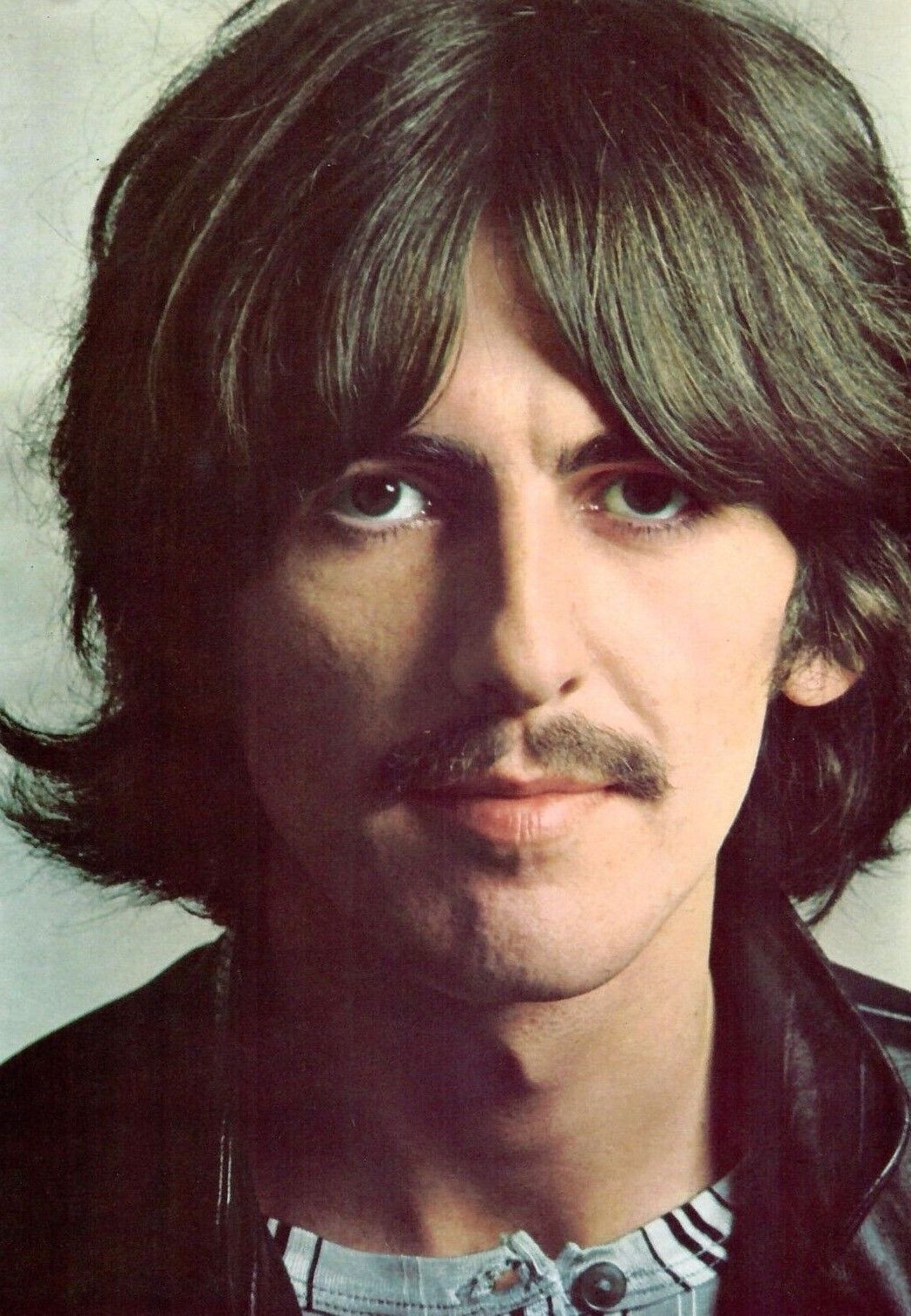 Open Space (mono version): The stereo and mono mixes differ dramatically during this 13-second section, the mono having the majority of elements faded down and thereby easier to describe. After Ringo's final cymbal crash from Section One, guitar feedback is featured on its own. Strange descending chords are then heard not unlike what have been attributed to George in Section One, undoubtedly played with his prototype fretless guitar, followed by a loud burst of echo effect from the engineering team. As this eventually fades away, Ringo kicks in with what becomes an introductory drum fill for Section Two on top of guitar feedback. Open Space (mono version): The stereo and mono mixes differ dramatically during this 13-second section, the mono having the majority of elements faded down and thereby easier to describe. After Ringo's final cymbal crash from Section One, guitar feedback is featured on its own. Strange descending chords are then heard not unlike what have been attributed to George in Section One, undoubtedly played with his prototype fretless guitar, followed by a loud burst of echo effect from the engineering team. As this eventually fades away, Ringo kicks in with what becomes an introductory drum fill for Section Two on top of guitar feedback.
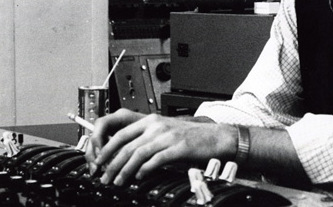 Open Space (stereo version): The stereo version has all of the elements of the mono but quite more. As the cymbal crash of Section One fades away, we hear what sounds like Mal Evans on trumpet while Paul is speaking to his fellow bandmates and/or the engineering crew. He appears to be saying: “Listen, shall we hear that?. See if the [sings] 'eeee's onnn...' Are you coming, son? I saw you do that you little bugger. Put yer bloody hands on your head, c'mon.” Ringo beats a little bit on his drums in between these words, and there are also various clicks and extraneous sounds that appear here as a result of leaving the faders up while creating the stereo mix. What sounds like John on saxophone is then heard simultaneously with Ringo's introductory drum fill which ends this section. Open Space (stereo version): The stereo version has all of the elements of the mono but quite more. As the cymbal crash of Section One fades away, we hear what sounds like Mal Evans on trumpet while Paul is speaking to his fellow bandmates and/or the engineering crew. He appears to be saying: “Listen, shall we hear that?. See if the [sings] 'eeee's onnn...' Are you coming, son? I saw you do that you little bugger. Put yer bloody hands on your head, c'mon.” Ringo beats a little bit on his drums in between these words, and there are also various clicks and extraneous sounds that appear here as a result of leaving the faders up while creating the stereo mix. What sounds like John on saxophone is then heard simultaneously with Ringo's introductory drum fill which ends this section.
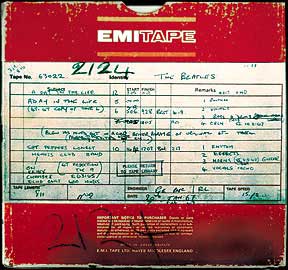 Section Two: What then follows is a full “Freak Out” section reprising the hypnotic vamp of the verses which continues for an undisclosed amount of measures. It's hard to say how many exact measures they recorded in this section since the song was faded out and then faded up with some measures omitted. However, sources say this 'take' extended to around five minutes. This would mean that about 30 seconds were cut out during the fade-out and fade-in. The mono version includes ten measures of this final section before it fades out while the stereo version includes eleven measures until it fades out and thirteen more measures until the song concludes. Section Two: What then follows is a full “Freak Out” section reprising the hypnotic vamp of the verses which continues for an undisclosed amount of measures. It's hard to say how many exact measures they recorded in this section since the song was faded out and then faded up with some measures omitted. However, sources say this 'take' extended to around five minutes. This would mean that about 30 seconds were cut out during the fade-out and fade-in. The mono version includes ten measures of this final section before it fades out while the stereo version includes eleven measures until it fades out and thirteen more measures until the song concludes.
 Full instrumentation abounds throughout this one-chord romp with Mal Evans squeaking out whatever single notes he could get out of his trumpet and John squealing rapidly with his saxophone. John also kept up his bass guitar throughout all of these proceedings, undoubtedly thinking that all of this could possibly become part of the finished product (as it nearly did). It appears that the song is going to fade away again but then it rebounds in time for us to hear their final cacophonous chord along with Ringo's wild drum fills and final three cymbal crashes. From the rhythm track we hear John ask, “How's that?” while Ringo famously screams, “I've got blisters on my fingers!” An echoing indecipherable guitar chord becomes the final word to this mess of brilliance! Full instrumentation abounds throughout this one-chord romp with Mal Evans squeaking out whatever single notes he could get out of his trumpet and John squealing rapidly with his saxophone. John also kept up his bass guitar throughout all of these proceedings, undoubtedly thinking that all of this could possibly become part of the finished product (as it nearly did). It appears that the song is going to fade away again but then it rebounds in time for us to hear their final cacophonous chord along with Ringo's wild drum fills and final three cymbal crashes. From the rhythm track we hear John ask, “How's that?” while Ringo famously screams, “I've got blisters on my fingers!” An echoing indecipherable guitar chord becomes the final word to this mess of brilliance!
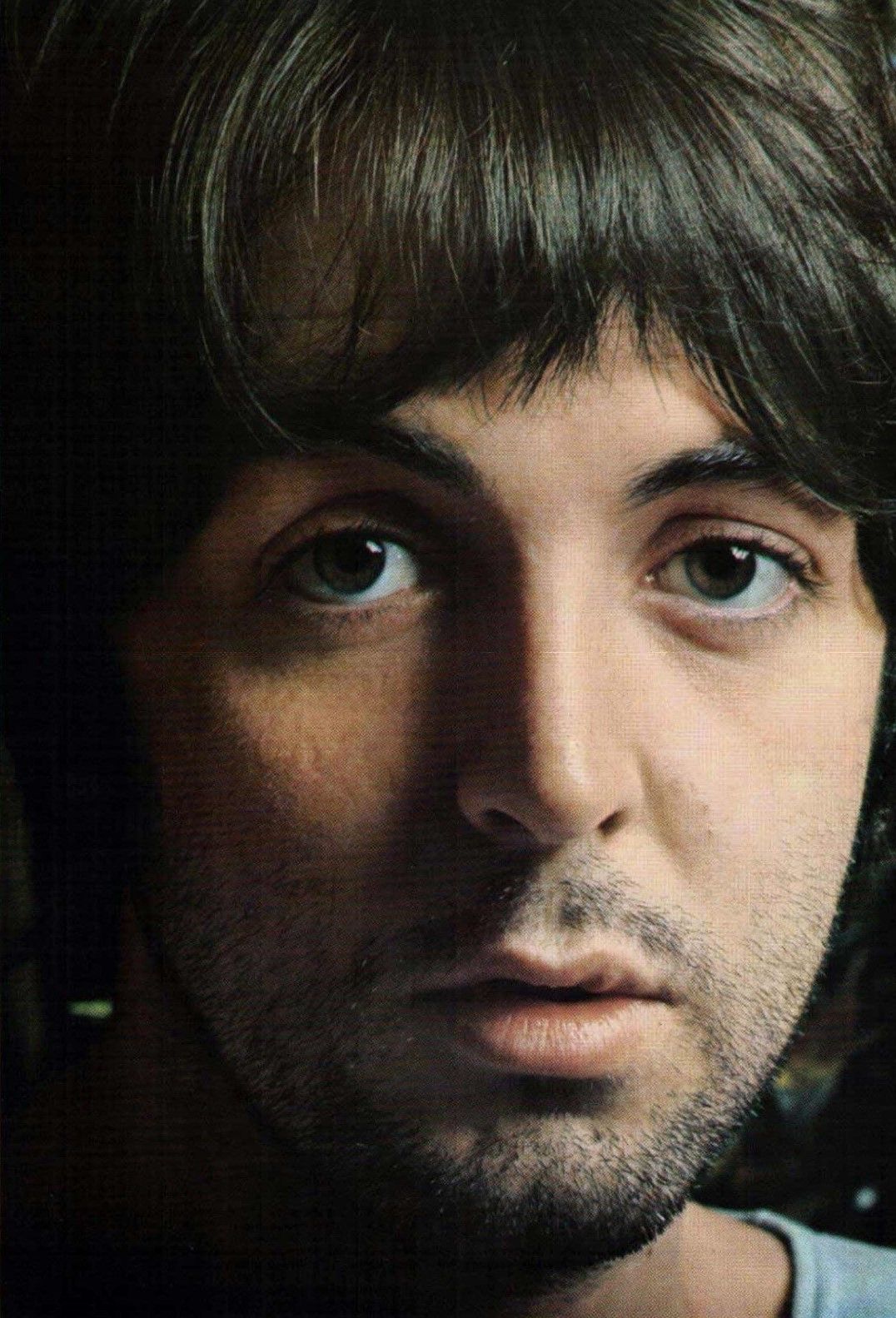 Say what you will about The Beatles not cooperating together for the “White Album,” but the performance on this track protests otherwise. Paul chuckles his way through the lead vocals, John puts in an impressive bass guitar performance and has fun bellowing through a nearby saxophone, George displays an infectious guitar figure that becomes the bedrock to the entire track, and Ringo is game to bash his drums until his hands bleed. They may have hated each other at the time, as many insist, but maybe they used “Helter Skelter” to blow some of this angst out of their system, breaking all of EMI Studio's decibel limits in the process. Say what you will about The Beatles not cooperating together for the “White Album,” but the performance on this track protests otherwise. Paul chuckles his way through the lead vocals, John puts in an impressive bass guitar performance and has fun bellowing through a nearby saxophone, George displays an infectious guitar figure that becomes the bedrock to the entire track, and Ringo is game to bash his drums until his hands bleed. They may have hated each other at the time, as many insist, but maybe they used “Helter Skelter” to blow some of this angst out of their system, breaking all of EMI Studio's decibel limits in the process.
American Releases
November 25th, 1968, was the release date for "The Beatles" (aka the "White Album") which featured "Helter Skelter" as its loudest and most raucous track. It hit the stores as a double CD set for the first time on August 24th, 1987, was re-released as a CD in a 30th Anniversary Edition on November 23rd, 1998, then came out as a remastered CD set on September 9th, 2009, and finally as a mono vinyl set on September 9th, 2014. An additional vinyl release of the album, with a newly created stereo mix, came out on November 9th, 2018 for its 50th Anniversary.
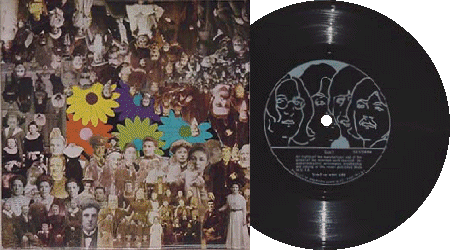 A small segment of the song was included on “The Beatles 1968 Christmas Record,” which was sent to members of their American fan club in December of 1968. Paul's lead vocal introduction to “Helter Skelter” is heard around the 1:45 mark of the near eight minute recording, the song being sped up to simulate a 33 rpm album being played at 45 rpm (which was probably how it was done). After Paul sings “then I see you again,” the final syllable morphs into an echo effect quite similar to what is repeatedly featured in “Paperback Writer.” A small segment of the song was included on “The Beatles 1968 Christmas Record,” which was sent to members of their American fan club in December of 1968. Paul's lead vocal introduction to “Helter Skelter” is heard around the 1:45 mark of the near eight minute recording, the song being sped up to simulate a 33 rpm album being played at 45 rpm (which was probably how it was done). After Paul sings “then I see you again,” the final syllable morphs into an echo effect quite similar to what is repeatedly featured in “Paperback Writer.”
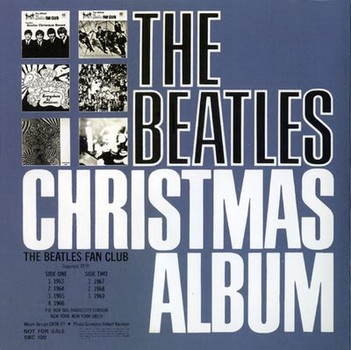 Sometime in the spring of 1971, US fan club members received an Apple album in the mail, the last installment of Christmas records called “The Beatles' Christmas Album.” This album featured all seven of the Christmas messages The Beatles recorded throughout their career, the 1968 recording that included the sped-up snippet of “Helter Skelter” included therein Sometime in the spring of 1971, US fan club members received an Apple album in the mail, the last installment of Christmas records called “The Beatles' Christmas Album.” This album featured all seven of the Christmas messages The Beatles recorded throughout their career, the 1968 recording that included the sped-up snippet of “Helter Skelter” included therein
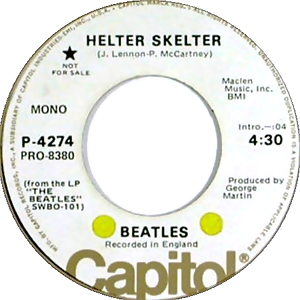 In April of 1976, just after the Beatles contract with EMI expired, Capitol Records took advantage of their legal freedom to release Beatles records as they saw fit. Because of the recent popularity of the CBS mini-series entitled "Helter Skelter," which detailed the gruesome activities of Charles Manson and his "family," Capitol initially thought it was a good idea to capitalize on its popularity by releasing the song as a single. Because DJ's were being bombarded with requests to hear the song after listeners had watched the TV program, promotional 45's were printed and sent to radio stations across the US. One side of the single was in mono for broadcast on AM radio, this being a simple combining of both stereo channels into one, and the other side in stereo for FM broadcast. The label listed the artist simply as "BEATLES," the only Capitol release not to use "THE" before their name, and specified that the song was "from the LP 'The Beatles' SWBO-101," aka the "White Album." It appears, however, that Capitol's intention to release this comercially as a single because of the recent popularity of the Manson murders was in bad taste. Therefore, the label decided to cancel these plans, these demo singles being the only edivence of their original intentions. In April of 1976, just after the Beatles contract with EMI expired, Capitol Records took advantage of their legal freedom to release Beatles records as they saw fit. Because of the recent popularity of the CBS mini-series entitled "Helter Skelter," which detailed the gruesome activities of Charles Manson and his "family," Capitol initially thought it was a good idea to capitalize on its popularity by releasing the song as a single. Because DJ's were being bombarded with requests to hear the song after listeners had watched the TV program, promotional 45's were printed and sent to radio stations across the US. One side of the single was in mono for broadcast on AM radio, this being a simple combining of both stereo channels into one, and the other side in stereo for FM broadcast. The label listed the artist simply as "BEATLES," the only Capitol release not to use "THE" before their name, and specified that the song was "from the LP 'The Beatles' SWBO-101," aka the "White Album." It appears, however, that Capitol's intention to release this comercially as a single because of the recent popularity of the Manson murders was in bad taste. Therefore, the label decided to cancel these plans, these demo singles being the only edivence of their original intentions.
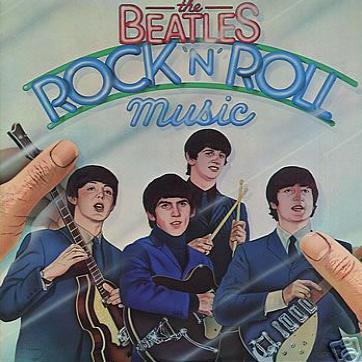 Shortly thereafter, on May 31st, 1976, "Helter Skelter" did get released as the b-side of the single "Got To Get You Into My Life," the a-side becoming quite successful on American radio (peaking at #7 on the Billboard Hot 100). Both of these songs were to be contained on a double-compilation album entitled "Rock 'n' Roll Music," which was released a week later, on June 7th, 1976. This time around, the single listed the artist as "THE BEATLES" and referenced its inclusion on "the LP 'Rock 'n' Roll Music'" instead of the "White Album." Undoubtedly because of the success of this single, the album was a great success in the US, reaching #2 on the Billboard album chart. George Martin was consulted regarding the preparation of this album and, with access to only the Capitol mixes, decided it was necessary to reverse the right and left channels of the original stereo mix for this album, this adjustment not being made for the above mentioned singles. Shortly thereafter, on May 31st, 1976, "Helter Skelter" did get released as the b-side of the single "Got To Get You Into My Life," the a-side becoming quite successful on American radio (peaking at #7 on the Billboard Hot 100). Both of these songs were to be contained on a double-compilation album entitled "Rock 'n' Roll Music," which was released a week later, on June 7th, 1976. This time around, the single listed the artist as "THE BEATLES" and referenced its inclusion on "the LP 'Rock 'n' Roll Music'" instead of the "White Album." Undoubtedly because of the success of this single, the album was a great success in the US, reaching #2 on the Billboard album chart. George Martin was consulted regarding the preparation of this album and, with access to only the Capitol mixes, decided it was necessary to reverse the right and left channels of the original stereo mix for this album, this adjustment not being made for the above mentioned singles.
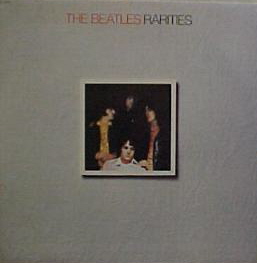 On March 24th, 1980, Capitol released a compilation album entitled “Rarities” as an answer to a British album of the same name which was being imported into the states. The majority of the tracks on the British version had been available in the US in some form so their American record label decided to formulate an album of Beatles tracks that were truly rare in the states. Since the mono version of the “White Album” had yet to be released in America, Capitol chose two tracks from the album that had significantly different sounding mono mixes, these being “Helter Skelter” and “Don't Pass Me By.” On March 24th, 1980, Capitol released a compilation album entitled “Rarities” as an answer to a British album of the same name which was being imported into the states. The majority of the tracks on the British version had been available in the US in some form so their American record label decided to formulate an album of Beatles tracks that were truly rare in the states. Since the mono version of the “White Album” had yet to be released in America, Capitol chose two tracks from the album that had significantly different sounding mono mixes, these being “Helter Skelter” and “Don't Pass Me By.”
On October 27th, 1980, Capitol re-released the above mentioned “Rock 'n' Roll Music” double album as two volumes for budget sales, “Rock 'n' Roll Music Volume 2” containing "Helter Skelter."
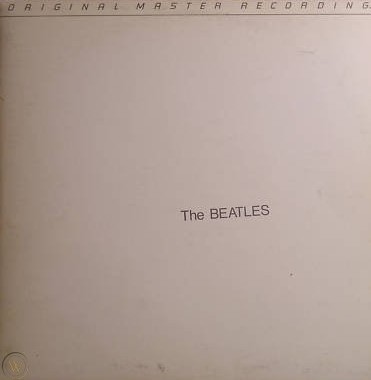 An interesting US vinyl edition of the “White Album” was released on January 7th, 1982, this being manufactured by Mobile Fidelity Sound Lab in Chatsworth, California as part of their "Original Master Recording" series. Their practice was to prepare a new master utilizing half-speed mastering technology from the original master tapes, in this case using the leased sub-master from Capitol Records. This release, which sounded superior to to all previous British and American pressings, was packaged in a non-embossed unnumbered cover that did not include the usual poster/lyric sheet or individual Beatles portraits as contained in standard releases. Nonetheless, this excellent edition of the album was only available for a short time and is quite collectible today. An interesting US vinyl edition of the “White Album” was released on January 7th, 1982, this being manufactured by Mobile Fidelity Sound Lab in Chatsworth, California as part of their "Original Master Recording" series. Their practice was to prepare a new master utilizing half-speed mastering technology from the original master tapes, in this case using the leased sub-master from Capitol Records. This release, which sounded superior to to all previous British and American pressings, was packaged in a non-embossed unnumbered cover that did not include the usual poster/lyric sheet or individual Beatles portraits as contained in standard releases. Nonetheless, this excellent edition of the album was only available for a short time and is quite collectible today.
.jpg) On January 24th, 1994, Capitol re-released the “Got To Get You Into My Life / Helter Skelter” single in the Cema “For Jukeboxes Only” series. This large group of singles was released in various colors of vinyl, this one arriving on orange vinyl. On January 24th, 1994, Capitol re-released the “Got To Get You Into My Life / Helter Skelter” single in the Cema “For Jukeboxes Only” series. This large group of singles was released in various colors of vinyl, this one arriving on orange vinyl.
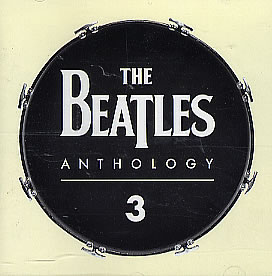 On October 28th, 1996, the first five minutes of "take two" of the song as recorded on July 18th, 1968 appeared on the compilation album “Anthology 3.” News of the 27-minute version of the song had been circulating by this time and, although this wasn't part of that recording, the version contained on this 1996 release was highly anticipated. The track was even featured on the five song CD Sampler of this release, which was produced for promotional purposes only and distributed to radio stations approximately around the time of release of the “Anthology 3” set. This CD Sampler is yet another hard find. On October 28th, 1996, the first five minutes of "take two" of the song as recorded on July 18th, 1968 appeared on the compilation album “Anthology 3.” News of the 27-minute version of the song had been circulating by this time and, although this wasn't part of that recording, the version contained on this 1996 release was highly anticipated. The track was even featured on the five song CD Sampler of this release, which was produced for promotional purposes only and distributed to radio stations approximately around the time of release of the “Anthology 3” set. This CD Sampler is yet another hard find.
As detailed above, the compilation album “Love,” which features two tracks that contain elements of “Helter Skelter,” was released on November 20th, 2006.
 The mono version of “Helter Skelter” appeared in a remastered state in America on September 9th, 2009, as part of the CD box set “The Beatles In Mono,” the entire “White Album” being part of that set. The vinyl edition of this box set being first released on September 9th, 2014. The mono version of “Helter Skelter” appeared in a remastered state in America on September 9th, 2009, as part of the CD box set “The Beatles In Mono,” the entire “White Album” being part of that set. The vinyl edition of this box set being first released on September 9th, 2014.
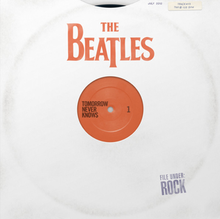 On July 24th, 2012, the iTunes Store, in partnership with EMI Records, released a Beatles compilation album entitled "Tomorrow Never Knows," the purpose of which was to highlight the group's influence on the history of rock music. The album had the approval of Paul and Ringo, as well as the board of directors for the estates of John and George, and was successful enough to peak at #24 on the Billboard album chart. "Helter Skelter" was an obvious choice for this release. On July 24th, 2012, the iTunes Store, in partnership with EMI Records, released a Beatles compilation album entitled "Tomorrow Never Knows," the purpose of which was to highlight the group's influence on the history of rock music. The album had the approval of Paul and Ringo, as well as the board of directors for the estates of John and George, and was successful enough to peak at #24 on the Billboard album chart. "Helter Skelter" was an obvious choice for this release.
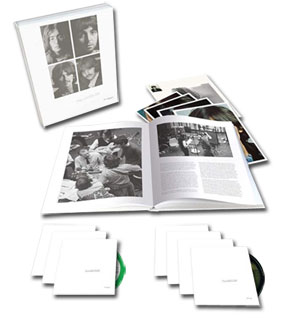 Various editions of the "White Album" were released on November 9th, 2018 to commemorate the 50th Anniversary of its original release. The "Deluxe" edition, which was made available in a 3CD set and a limited edition 180-gram 4LP vinyl set, contained the newly created Giles Martin mix of the "White Album." The "Super Deluxe" 6CD + 1Blu-ray edition also contained the entire "take two" of "Helter Skelter" as recorded on July 18th, 1968, as well as the impromptu song "(You're So Square) Baby, I Don't Care" and "take 17" of "Helter Skelter," both of these being recorded on September 9th of that year. Various editions of the "White Album" were released on November 9th, 2018 to commemorate the 50th Anniversary of its original release. The "Deluxe" edition, which was made available in a 3CD set and a limited edition 180-gram 4LP vinyl set, contained the newly created Giles Martin mix of the "White Album." The "Super Deluxe" 6CD + 1Blu-ray edition also contained the entire "take two" of "Helter Skelter" as recorded on July 18th, 1968, as well as the impromptu song "(You're So Square) Baby, I Don't Care" and "take 17" of "Helter Skelter," both of these being recorded on September 9th of that year.
Paul's live album “Good Evening New York City” was released on November 17th, 2009, his first recorded version of the song being featured therein.
Live Performances
The Beatles never performed "Helter Skelter" live, and it appeared that Paul was not ever going to include it in his live set lists either because of its infamous connections with the 1969 Charles Manson murders. When asked in a 2018 podcast with Marc Maron about his reaction to the murders being ridiculously inspired by this song, Paul replied: "You're suddenly singled out as being the soundtrack to a murderer, and it was pretty scary...For years I wouldn't do that song just 'cause of the connection. I felt like if I did it, it would be a victory for him, you know? And I thought, 'No, wait a minute, I wrote it! It's my record, not his!' And he's in jail anyway." When the interviewer stated that he had recently died, Paul replied, "Is he? Oh, he did, didn't he? YEAH! F*CK YOU!"
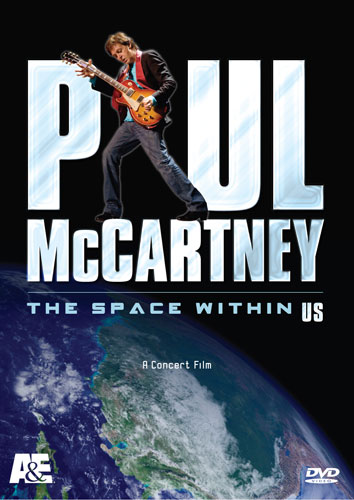 Paul eventually included the song in his concert set lists and then stuck to it pretty religiously thereafter. He included it on his 2004 Summer Tour, which ran from May 25th in Gijon, Spain to June 26th in Pilton, England. His 2005 "US" Tour also included the song, this tour running from September 16th in Miami, Florida to November 30th in Los Angeles, California. "Helter Skelter" was one of two songs Paul and his band perfromed on the 48th Annual Grammy Awards on February 8th, 2006. Paul eventually included the song in his concert set lists and then stuck to it pretty religiously thereafter. He included it on his 2004 Summer Tour, which ran from May 25th in Gijon, Spain to June 26th in Pilton, England. His 2005 "US" Tour also included the song, this tour running from September 16th in Miami, Florida to November 30th in Los Angeles, California. "Helter Skelter" was one of two songs Paul and his band perfromed on the 48th Annual Grammy Awards on February 8th, 2006.
 It was also an encore selection for his “Summer Live '09” tour which began on July 17th in New York City and ended on August 19th in Arlington, Texas. Then it was part of his brief “Good Evening Europe Tour” of 2009 which ran from December 2nd in Hamburg, Germany to December 22nd in London, England. His extensive “Up And Coming Tour” included the song as well, this tour stretching from March 28th, 2010 in Phoenix, Arizona to June 10th, 2011 in Las Vegas, Nevada. Then came his “On The Run” Tour which featured “Helter Skelter” as the next-to-last song of each concert, this tour spanning from July 15th, 2011 in New York City to November 29th, 2012 at Rexall Place in Edmonton, California. It was also an encore selection for his “Summer Live '09” tour which began on July 17th in New York City and ended on August 19th in Arlington, Texas. Then it was part of his brief “Good Evening Europe Tour” of 2009 which ran from December 2nd in Hamburg, Germany to December 22nd in London, England. His extensive “Up And Coming Tour” included the song as well, this tour stretching from March 28th, 2010 in Phoenix, Arizona to June 10th, 2011 in Las Vegas, Nevada. Then came his “On The Run” Tour which featured “Helter Skelter” as the next-to-last song of each concert, this tour spanning from July 15th, 2011 in New York City to November 29th, 2012 at Rexall Place in Edmonton, California.
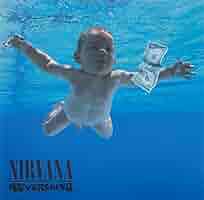 The song was also an encore number during his “Out There” tour which ran from May 4th, 2013 in Belo Horizonte, Brazil to October 22nd, 2015 in Buffalo, New York. Paul periodically included "Helter Skelter" as an encore song during his "One On One" tour, which started on April 13th, 2016 in Fresno, California and ended on December 16th, 2017 in Aukland, New Zealand. When in Seattle, Washington on April 17th, 2016 during this tour, Paul invited former Nirvana bassist Krist Novoselic to the stage for an amazing live performance of “Helter Skelter” which brought the house down. Paul's "Freshen Up" tour also included the song, this tour beginning on September 17th, 2018 in Quebec City, Canada and ending on July 13th, 2019 at Dodger's Stadium in Los Angeles, California, where Ringo joined Paul on stage during his encore to perform "Helter Skelter." The song was also an encore number during his “Out There” tour which ran from May 4th, 2013 in Belo Horizonte, Brazil to October 22nd, 2015 in Buffalo, New York. Paul periodically included "Helter Skelter" as an encore song during his "One On One" tour, which started on April 13th, 2016 in Fresno, California and ended on December 16th, 2017 in Aukland, New Zealand. When in Seattle, Washington on April 17th, 2016 during this tour, Paul invited former Nirvana bassist Krist Novoselic to the stage for an amazing live performance of “Helter Skelter” which brought the house down. Paul's "Freshen Up" tour also included the song, this tour beginning on September 17th, 2018 in Quebec City, Canada and ending on July 13th, 2019 at Dodger's Stadium in Los Angeles, California, where Ringo joined Paul on stage during his encore to perform "Helter Skelter."
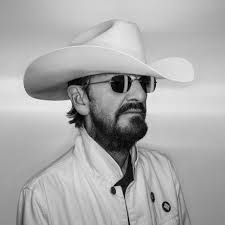 The song was also included in Paul's "Got Back" tour, which began on April 28th, 2022 in Spokane, Washington and ended on December 19th, 2024 in London. There are two especially noteworthy performances of "Helter Skelter" during the time of this tour, the first being of Paul with The Foo Fighters on September 3rd, 2022 at the "Taylor Hawkins Tribute Concert" at Wembley Stadium in London. The second was on the final date of the McCartney's tour, December 19th, 2024 at London's O2 Arena where, during the encore, Paul announces "Bring to the stage the mighty, the one and only, Mr. Ringo Starr!" After asking, "Should we rock? Get on your kit, lad," Ringo accompanies Paul's band on "Sgt. Pepper (reprise)" and finally "Helter Skelter." The song was also included in Paul's "Got Back" tour, which began on April 28th, 2022 in Spokane, Washington and ended on December 19th, 2024 in London. There are two especially noteworthy performances of "Helter Skelter" during the time of this tour, the first being of Paul with The Foo Fighters on September 3rd, 2022 at the "Taylor Hawkins Tribute Concert" at Wembley Stadium in London. The second was on the final date of the McCartney's tour, December 19th, 2024 at London's O2 Arena where, during the encore, Paul announces "Bring to the stage the mighty, the one and only, Mr. Ringo Starr!" After asking, "Should we rock? Get on your kit, lad," Ringo accompanies Paul's band on "Sgt. Pepper (reprise)" and finally "Helter Skelter."
Conclusion
"It isn't revolutionary and won't change the face of music as did 'Sgt. Pepper,' but it contains that sheer artistry, those masterful tunes and the most exquisite depth in recording. It is beyond comparison."
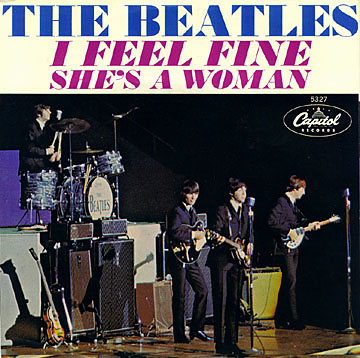 This 1968 review of the “White Album” in the British weekly music newspaper Record Mirror expresses it perfectly. While “Helter Skelter” may not exactly fit into the description of a “masterful tune,” it most surely falls into the category of “exquisite depth in recording.” Paul's encouragement to the engineers to “hike up the drum sound and really get it as loud and horrible” as possible, and then afterward to insist, “'No, it still sounds too safe, it's got to get louder and dirtier,” resulted in the deepest, wettest, echoing cacophony in the entire Beatles catalog. And within the hands of producer Chris Thomas as well as George Martin, who created the stereo mix, the results are much more artistic than just slapping on another layer of reverb, such as with Capitol's meddled versions of “She's A Woman” and “I Feel Fine.” As the Record Mirror states, the results are “beyond comparison.” This 1968 review of the “White Album” in the British weekly music newspaper Record Mirror expresses it perfectly. While “Helter Skelter” may not exactly fit into the description of a “masterful tune,” it most surely falls into the category of “exquisite depth in recording.” Paul's encouragement to the engineers to “hike up the drum sound and really get it as loud and horrible” as possible, and then afterward to insist, “'No, it still sounds too safe, it's got to get louder and dirtier,” resulted in the deepest, wettest, echoing cacophony in the entire Beatles catalog. And within the hands of producer Chris Thomas as well as George Martin, who created the stereo mix, the results are much more artistic than just slapping on another layer of reverb, such as with Capitol's meddled versions of “She's A Woman” and “I Feel Fine.” As the Record Mirror states, the results are “beyond comparison.”
Song Summary
“Helter Skelter”
Written by: John Lennon / Paul McCartney
- Song Written: June, 1968
- Song Recorded: September 9 and 10, 1968
- First US Release Date: November 25, 1968
- First US Album Release: Apple #SWBO-101 “The Beatles”
- US Single Release: Capitol #4274 (promo single)
- Highest Chart Position: n/a
- British Album Release: Apple #PCS 7067-7068 “The Beatles”
- Length: 4:30 (stereo) 3:40 (mono)
- Key: E major
- Producer: Chris Thomas
- Engineers: Ken Scott, John Smith
Instrumentation (most likely):
- Paul McCartney - Lead and Background Vocals, Lead and Rhythm Guitar (1962 Epiphone ES-230TD Casino)
- John Lennon - Bass (1961 Fender Bass VI), Piano (Hamburg Steinway Baby Grand), Saxophone, backing vocals
- George Harrison - Lead Guitar (1967 Bartell Fretless prototype), backing vocals
- Ringo Starr - Drums (1964 Ludwig Super Classic Black Oyster Pearl), shouting
- Mal Evans - Trumpet
Written and compiled by Dave Rybaczewski
|
IF YOU WOULD LIKE TO MAKE A DONATION TO KEEP THIS WEBSITE UP AND RUNNING, PLEASE CLICK BELOW!
Sign Up Below for our MONTHLY BEATLES TRIVIA QUIZ!
|